 Peonies are a tried-and-true favorite of gardeners in temperate areas around the globe. They make bright, good-smelling, large flowers that hold up well in vases. What’s not to love? Peonies are so lovely that many people even choose them as wedding flowers. They are among the few kinds of flowers with their own societies, like roses and irises. These low-maintenance plants are a great option for any gardener looking for a long-term, botanical companion.
Peonies are a tried-and-true favorite of gardeners in temperate areas around the globe. They make bright, good-smelling, large flowers that hold up well in vases. What’s not to love? Peonies are so lovely that many people even choose them as wedding flowers. They are among the few kinds of flowers with their own societies, like roses and irises. These low-maintenance plants are a great option for any gardener looking for a long-term, botanical companion.
IDENTIFY NEW PLANTS WITH PLANTSNAP
What Is a Peony?
While formerly included in the Ranunculaceae family, the plant family that includes larkspur, columbine, and buttercups, peonies have recently been moved to their own family, Paeoniaceae. There are 33 recognized species of peonies throughout the world and countless horticultural cultivars.
Botanically, peonies are herbaceous perennials or small, woody shrubs. Their leaves alternate along the stem of the plant and are deeply divided into many lobes. Often, the number of lobes is a way to distinguish between peony species. Peony flowers naturally have five to ten petals, however horticultural varieties can have many more than that. The flowers are pink, red, brown, white or yellow. A distinctive feature of peonies are their abundant number of yellow stamens in the center of the flower. The flowers have both male and female organs, and when the female eggs mature into seeds, they make a berry called an aril. The aril you are probably most familiar with is the pomegranate seed.
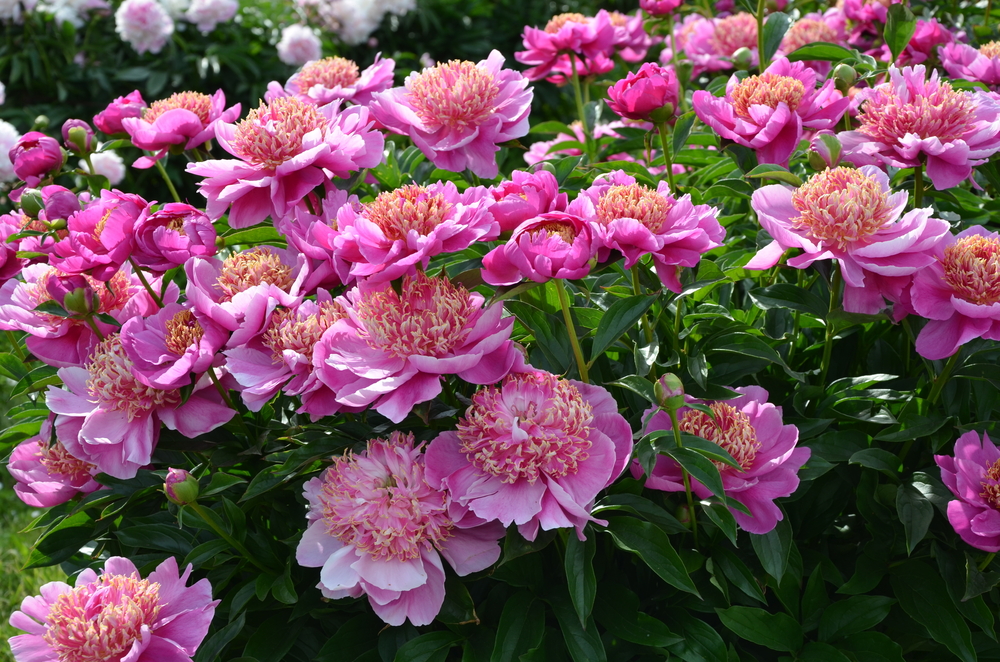
A peony plant in full bloom.
Cultivation of Different Types of Peonies
Peonies are one of the oldest known cultivated flowers, tended to by humans for at least 4,000 years. Their medicinal properties, wonderful smells, ease of care, and bodacious flowers are likely some of the main reasons these plants have remained relevant for so long.
In the four millennia humans have grown these peonies, they’ve discovered wonderful mutations and hybrids that are common in garden peonies today. Some of that variety gets displayed in the different flower forms. Most wild species of peonies are simply ‘single’ bloom types, with five or ten petals surrounding the center. Plant breeders, however, have created a staggering amount of flower types within the peony family. These flower shapes go by fun names like ‘semi-double’, ‘anemone,’ ‘full-double,’ ‘bomb,’ and ‘chrysanthemum.’
One difficulty with peonies is that a single plant typically only has a bloom season of 1-2 weeks. To offset this short flowering season, horticulturalists bred plants for different bloom times. In the nursery, you will see peonies labeled with ‘early-season,’ ‘mid-season,’ and ‘late-season.’ When planted together, these three types of peonies will bring a garden bright blooms throughout spring and into early summer.
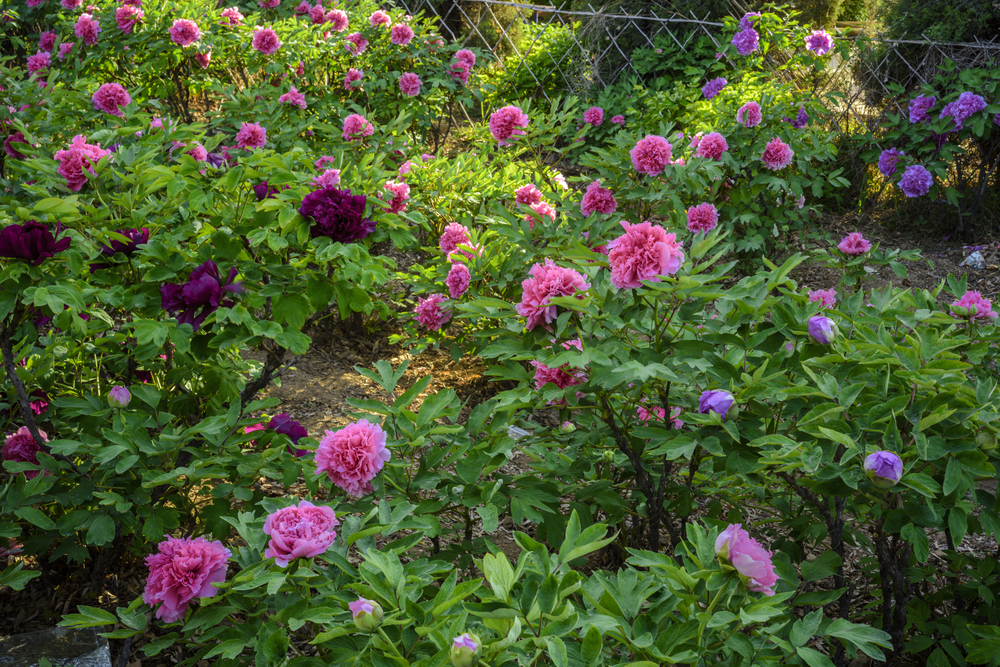
A peony garden with different cultivars of peonies blooming simultaneously.
Where Do Peonies Grow Naturally?
Peonies are native throughout the northern hemisphere. The Mediterranean (broadly defined, including all of Turkey into the Caucasus Mountains) contains the highest number of native peony species. In the Mediterranean, peonies tend to grow in shrubby, chaparral-type ecosystems and sometimes on the lower slopes of mountains.
Northern Asia, specifically China, is the second epicenter of peony diversity. In Asia, they tend to grow midway up mountains, either in grassy areas or in open forests. All of the woody, tree (really, they are more like small to mid-sized shrubs) species of peonies grow in southwestern China and Tibet. North America has only two of the 33 named peony species, one of which grows exclusively in California and the other throughout the western U.S. in mountainous places.
Peony Conservation
In the wild, several peonies are threatened with extinction due to over-harvesting by collectors and their naturally small habitat areas. For example, species such as the Majorcan peony only grow on the northern part of the small island of Majorca. Other species have similarly small habitat distributions, which makes them vulnerable to climate change and pressures from human development and land use.
That being said, the peonies you find at the nursery are horticultural varieties, not natural species. Plant lovers like to hybridize peonies for specific traits, such as bloom shape, flowering season, and petal color. While this guide mainly focuses on the 33 natural species of peonies, it touches on a few of the horticultural favorites.
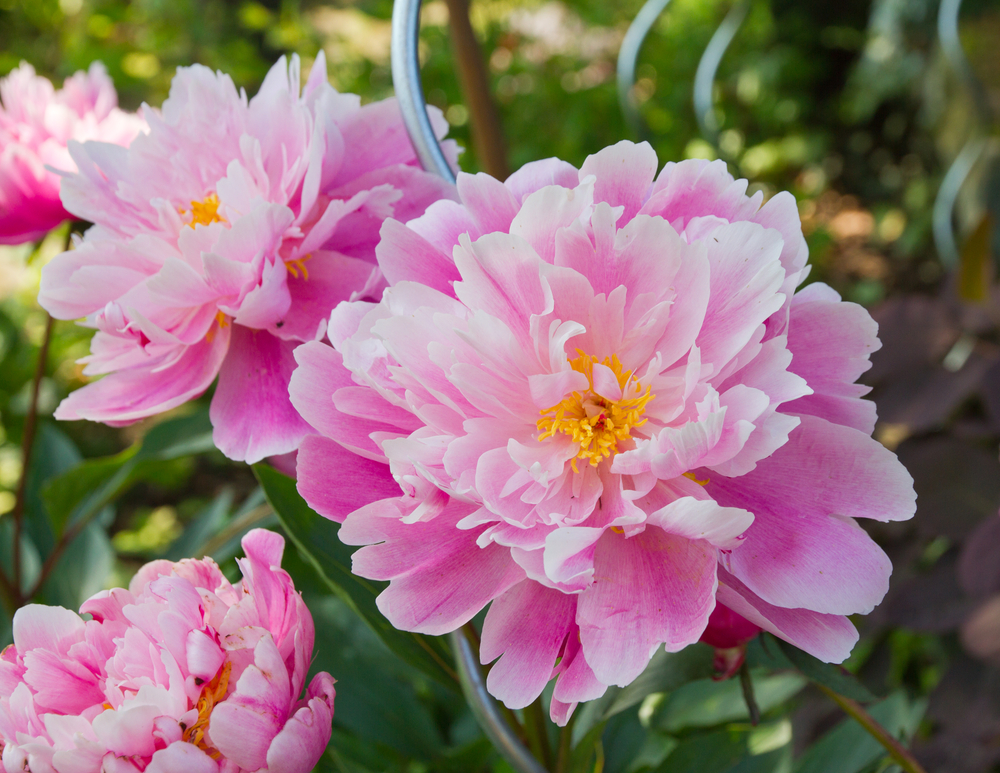
An example of a double-bloom type of peony flower.
How Do I Grow Peonies in My Garden?
Most peony varieties and species require similar conditions to thrive. First, plant your peonies in the fall. The best way to start peonies is to buy peony roots, which are sold with the bulbs in most nurseries. Plant them beneath a few inches of soil. You can also buy peonies in containers. While it may be tempting to buy these container plants from the nursery while they are in full bloom, it’s best to wait until the fall during their dormancy to buy and transplant container peonies into the ground.
But before you put that root or container plant in the soil, spend some thoughtful time considering the sunlight, soil, wind protection, and future uses of the area you plan to plant. Peonies despise being transplanted, so you want to choose a spot favorable to their growth on the first try.
Soil
Peonies do best in rich, deep soil that is high in organic matter. The soil must drain well because peonies will die if their roots stay soggy for too long. This means you shouldn’t plant peonies in a depression in the landscape that frequently gets inundated with water. When planting, amend the soil with a generous amount of compost and a little fertilizer.
Sun
Almost all peonies, as well as most cut flowers, perform best in full sun. However, most peonies will still bloom if they get more than a half-day of sun throughout the growing season. If planted Your peony probably won’t make blooms if you plant it in full shade.
If you’re planting in the fall, remember that the angle of the sun will be higher in the sky during springs and summer, when the peonies are actively growing. That means that an area that might be shady in October or November may actually be suitable peony habitat in the summer.
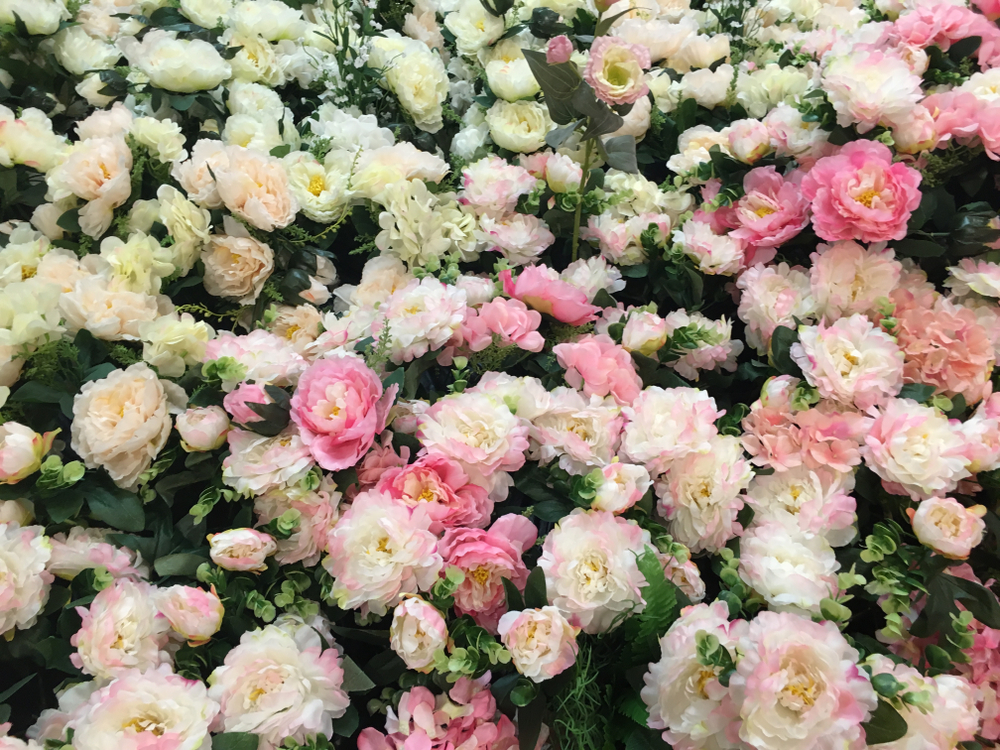
Shelter
What’s the reason you’re planting peonies? For those spectacular blooms, of course. Unfortunately, these heavy blooms can cause even sturdy stems to snap during wind storms. To prevent this unnecessary trauma to your plants, choose a place that is sheltered from spring and summer winds. If your plant looks weighed down, staking is always an option. Tomato cages, sticks, or wood stakes all work to add structural support for your plants.
Most peonies grow well throughout the U.S. between USDA hardiness zones 3-8. They can tolerate long, cold winters.
Future Uses of Your Garden
Gardens are dynamic places. Most gardeners like to experiment with different plants and switch the garden up every year. Peonies are long-lived perennials, with some individuals reportedly living up to 100 years. Once planted, peonies usually take two or three years to begin producing solid flower displays. Since they don’t transplant well and they are long-lived, the place you initially choose for your peony should be the place you want peonies for decades to come. Choose wisely!
Once your peonies establish, they require little care or maintenance and will produce sweet-smelling, brilliant blooms for decades to come.
Pink Peonies
The majority of peony species have naturally pink blooms. Even some of the white, yellow, or red species of peonies occasionally turn out with pink flowers.
Algerian Peony – Paeonia algeriensis
This peony only grows in a region called Kabylie in northern Algeria. In its native habitat, this peony grows under mixed conifer or mixed deciduous forests in the mountains. This peony isn’t cultivated as a horticultural plant.
Algerian Peony Bloom Type
Single bloom.
Algerian Peony Flower Color
Magenta pink to red petals.
Algerian Peony Sun Requirements
Full sun to part shade
Algerian Peony Water Requirements
Will tolerate some drought.
Algerian Peony Growing Zones
Unknown
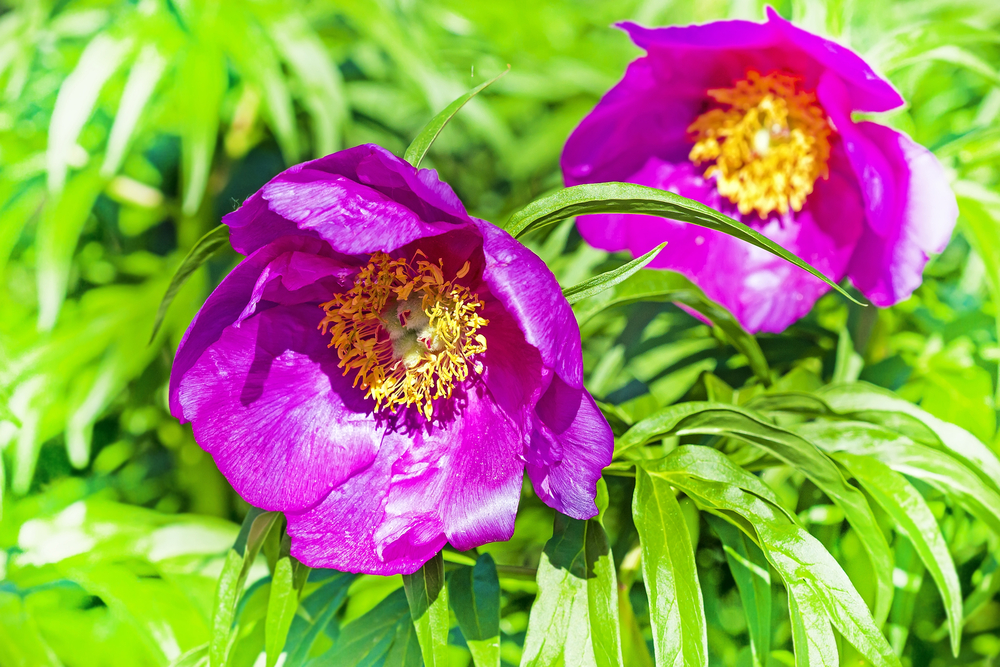
Anomaly peony growing wild in Russia.
Anomaly Peony – Paeonia anomala
This peony, a native of Mongolia and Russia, was named by the father of binomial classification himself, Carl Linnaeus. The extracts of anomaly peony fruits are antioxidants.
Anomaly Peony Bloom Type
Single blooms with some double bloom cultivars available.
Anomaly Peony Flower Color
Hot pink.
Anomaly Peony Sun Requirements
Full sun or part shade.
Anomaly Peony Water Requirements
Prefers moderately moist soil. Not too wet nor not too dry.
Anomaly Peony Growing Zones
Hardy to USDA growing zone 4.
Paeonia areitina
This widely spread peony grows throughout most of eastern Europe, from 1000 to 6000 feet in elevation.
Paeonia areitina Bloom Type
Single bloom.
Paeonia areitina Flower Color
Hot pink.
Paeonia areitina Sun Requirements
Full sun to part shade.
Paeonia areitina Water Requirements
Does well in moist soils. Will tolerate some drought.
Paeonia areitina Growing Zones
Hardy to USDA growing zone 6b.
Paeonia broteri
This peony is closely related to Paeonia clusii and is native to the Iberian Peninsula (Spain and Portugal). It doesn’t grow very well in gardens and is one of the least cold-hardy peony species.
Paeonia broteri Bloom Type
Single bloom.
Paeonia broteri Flower Color
Bubble gum pink.
Paeonia broteri Sun Requirements
Full sun to part shade.
Paeonia broteri Water Requirements
Moderate water.
Paeonia broteri Growing Zones
Hardy to USDA growing zone 8a.
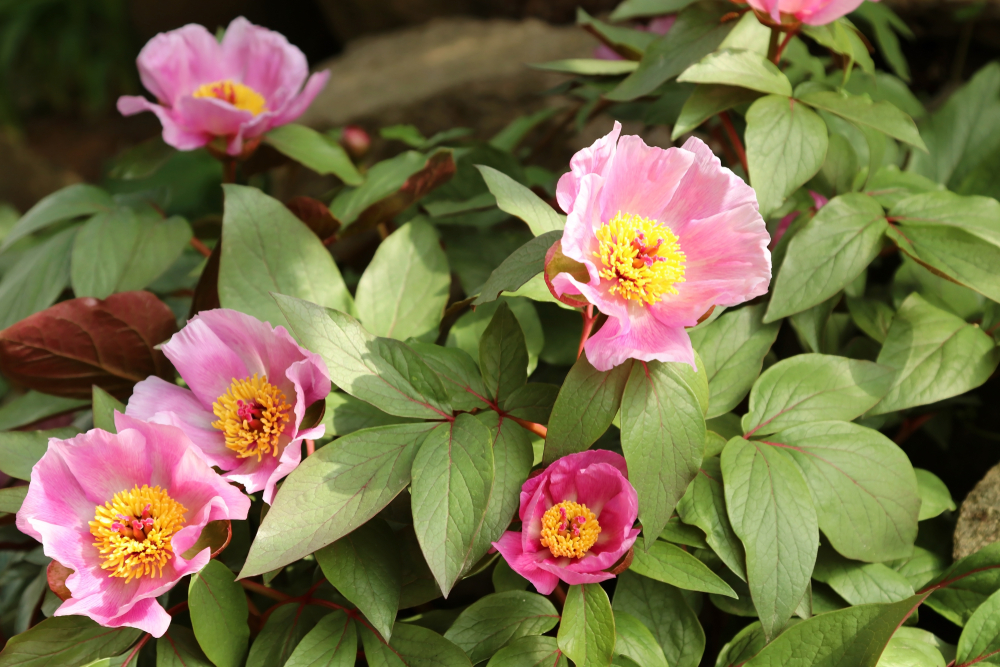
Majorcan Peony – Paeonia cambessedesii
This peony is restricted to the north of Majorca, a Mediterranean island, where it is considered endangered. However, as a cultivar, it is an easily grown garden beauty. The Majorcan peony totes leaves with purple undersides, adding dynamic foliage as well as stunning pink flowers to a garden.
Majorcan Peony Bloom Type
Single bloom.
Majorcan Peony Flower Color
Varied shades of pink.
Majorcan Peony Sun Requirements
Full sun to part shade.
Majorcan Peony Water Requirements
Needs moisture but doesn’t tolerate wet feet.
Majorcan Peony Growing Zones
Hardy to USDA growing zone 7a.
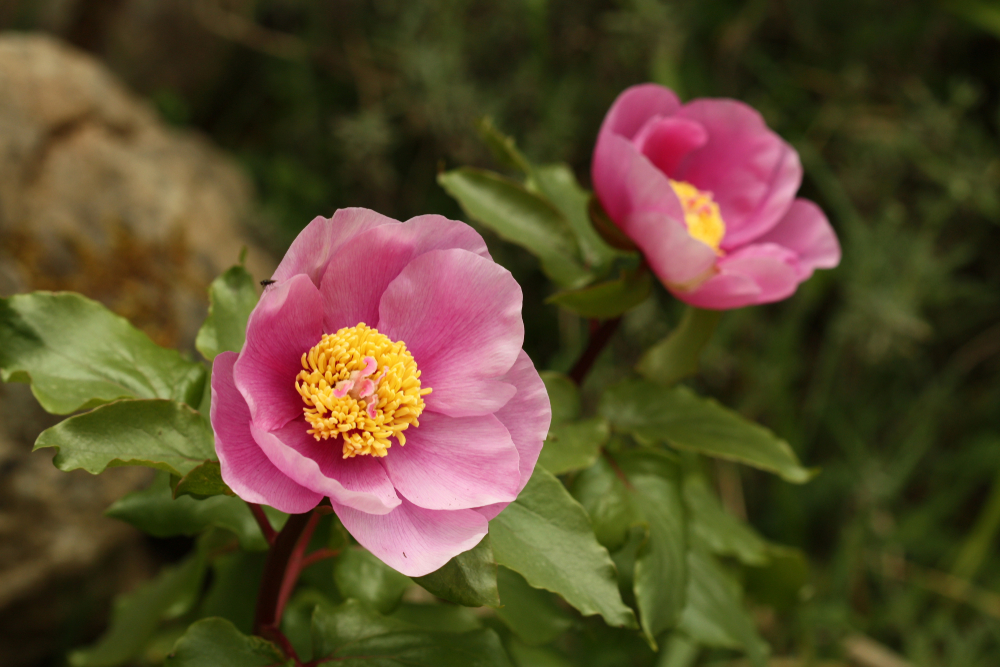
Corsican Peony – Paeonia corsica
The Corsican peony is native to islands off the coast of France, Italy, and Greece. It has leaves with 9-20 leaflets and is rare in its native habitat. This species has frequently been mistaken for other peony species, such as Paeonia macula and Paeonia cambessedesii.
Corsican Peony Bloom Type
Single blooms.
Corsican Peony Flower Color
Bright, bubble gum pink flowers.
Corsican Peony Sun Requirements
Full sun.
Corsican Peony Water Requirements
Well-drained soil with moderate water needs.
Corsican Peony Growing Zones
Hardy to growing zone 4b.
Keserwan Peony – Paeonia kesrouanensis
This peony is difficult for growers to get their hands on. It is native to southern Turkey and Syria, a region that has experienced significant unrest over the last decade, preventing bioprospectors from obtaining seeds from the plant.
Keserwan Peony Bloom Type
Single bloom.
Keserwan Peony Flower Color
The petals have a deep magenta stripe in the middle that transitions to light pink near the outside.
Keserwan Peony Sun Requirements
Enjoys full sun.
Keserwan Peony Water Requirements
Moderate water.
Keserwan Peony Growing Zones
Unknown.
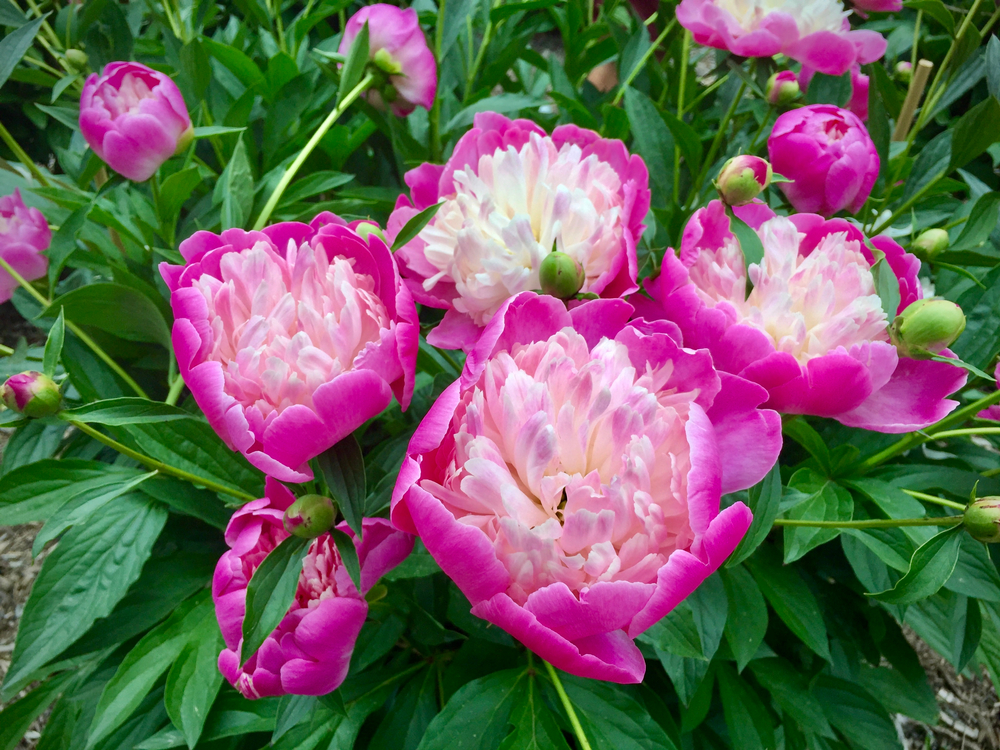
It’s easy to see why this peony is called a bowl of beauty!
Chinese Peony “Bowl of Beauty” – Paeonia lactiflora
This peony is a favorite among gardeners for its strong flower stalks and longevity as a cut flower. Bloom in the mid to late summer, this peony has huge blooms that brighten up any garden.
Chinese Peony Bloom Type
Anemone bloom.
Chinese Peony Flower Color
Pink outer petals with yellow to white inner petals.
Chinese Peony Sun Requirements
Full sun to part shade.
Chinese Peony Water Requirements
Medium moisture in well-drained soils.
Chinese Peony Growing Zones
Hardy to USDA growing zone 3.
Paeonia mairei
This peony prefers a little more shade than most species. It does well in woodlands, where it forms a full, low shrubby shape. The foliage has deep venation, giving this plant an intriguing appearance after it has finished flowering.
Paeonia mairei Bloom Type
Single bloom.
Paeonia mairei Flower Color
Light pink.
Paeonia mairei Sun Requirements
Part shade.
Paeonia mairei Water Requirements
Likes regular moisture but doesn’t tolerate too much water.
Paeonia mairei Growing Zones
Hardy to USDA growing zone 4.
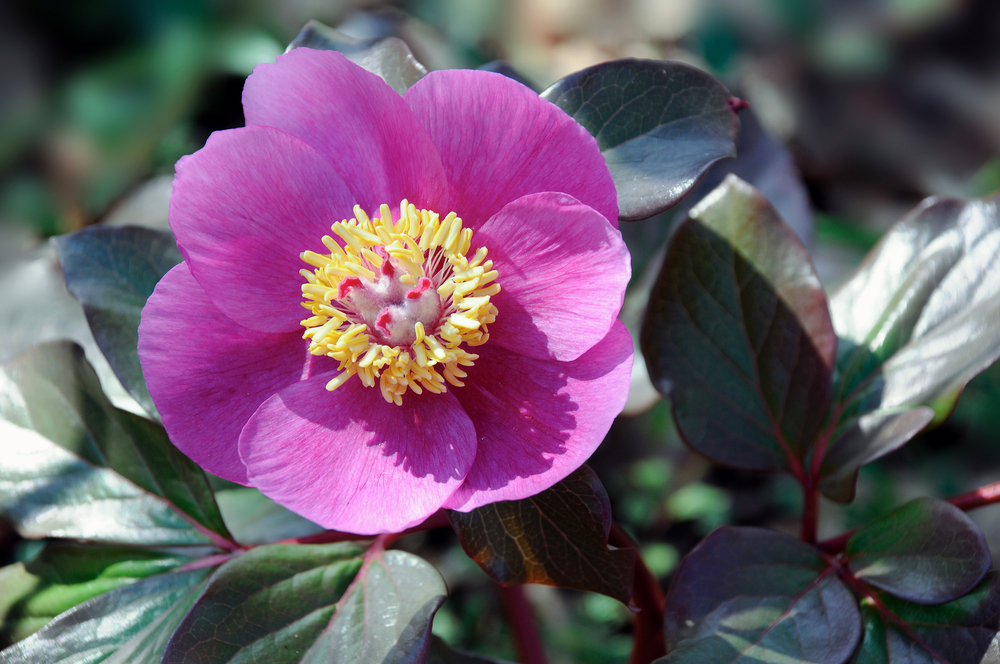
Coral Peony – Paeonia mascula
Native to the Mediterranean and the Middle East, this small peony only flowers for one week each year. Interestingly, some individuals have naturalized in the British Isles, a much more dreary place than their native homes.
Coral Peony Bloom Type
Single bloom.
Coral Peony Flower Color
Magenta pink.
Coral Peony Sun Requirements
Full sun.
Coral Peony Water Requirements
Requires regular watering.
Coral Peony Growing Zones
Hardy to USDA growing zone 7a.
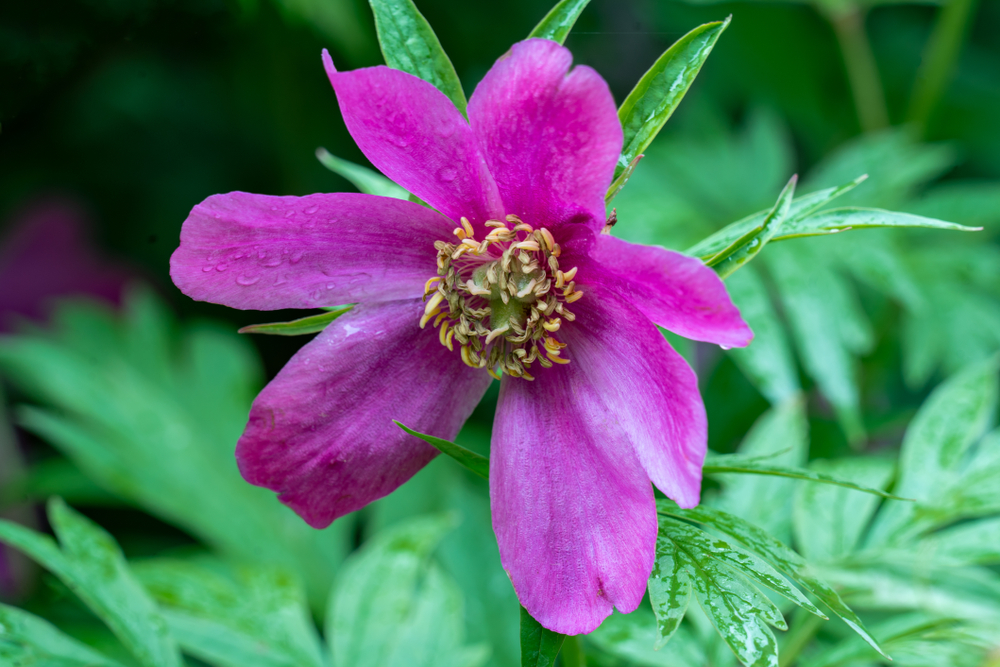
A magenta flower from a Veitch’s peony.
Veitch’s Peony – Paeonia veitchii
This peony is one of the only species that will flower and thrive in full shade, which is interesting since it is native to the sunny, mountainous grasslands of China. Veitch’s peony is relatively low growing.
Veitch’s Peony Bloom Type
Single bloom.
Veitch’s Peony Flower Color
Usually solid pink. Some cultivars have a white stripe in the middle of each petal.
Veitch’s Peony Sun Requirements
Full sun to full shade.
Veitch’s Peony Water Requirements
Prefers moist, but not soggy, soil.
Veitch’s Peony Growing Zones
Hardy to USDA growing zone 8.
Qiui’s Peony – Paeonia qiui
This peony was recently discovered and it is the most endangered within the peony family. It is currently known to exist in only four locations in China, three of which are on cliffs. Due to its rarity, it is unlikely that home gardeners will get their hands on this unusual plant. Qiui’s peony is one of the few species of woody peony, meaning it is a shrub that doesn’t die back to the roots each year.
Qiui’s Peony Bloom Type
Lotus bloom.
Qiui’s Peony Flower Color
The petals can either be entirely neon magenta or white with a magenta stripe in the middle.
Qiui’s Peony Sun Requirements
Probably part shade.
Qiui’s Peony Water Requirements
Unknown
Qiui’s Peony Growing Zones
Unknown.
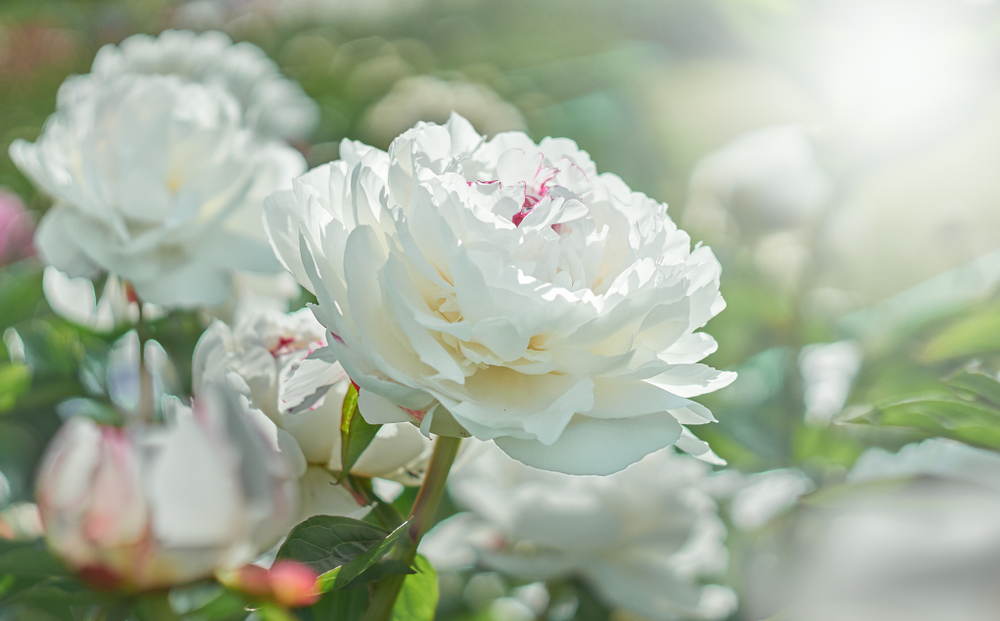
White Peonies
White peonies are classy, simple, and elegant. These bloomers sometimes have splashes of red or pink in their petals, which adds some flair to these already interesting plants.
Clusius’s Peony – Paeonia clusii
This species most commonly grows in a Mediterranean chaparral-type habitat on a few islands off the coast of Greece in calcareous soils. Unlike most peonies, the entire plant lacks hairs. This peony grows lower to the ground than most species.
Clusius’s Peony Bloom Type
Single bloom.
Clusius’s Peony Flower Color
White petals. The stamen in the middle of the flower can have a reddish tint to it. Some cultivars have pink petals.
Clusius’s Peony Sun Requirements
Full sun to part shade.
Clusius’s Peony Water Requirements
Can tolerate some drought but does best in rich, consistently moist but well-drained soils.
Clusius’s Peony Growing Zones
Unknown.
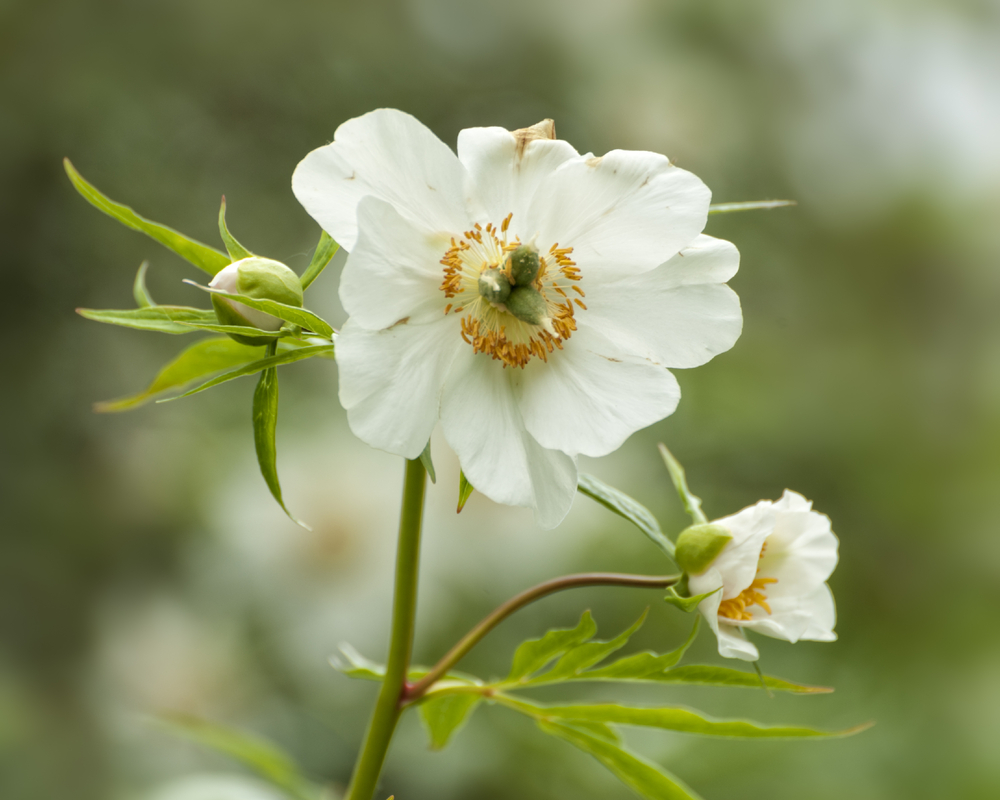
A Himalayan peony in flower.
Himalayan Peony – Paeonia emodi
Just like the mountains, it is named after, this plant is one of the tallest peonies. People use this plant for various medical ailments, such as heart disease, asthma, and diarrhea. The popular cultivar of Paeonia emodi is ‘White Innocence’, a tall, white peony used by gardeners.
Himalayan Peony Bloom Type
Single bloom
Himalayan Peony Flower Color
Pure white.
Himalayan Peony Sun Requirements
Full sun to part shade.
Himalayan Peony Water Requirements
Moist soils. Can tolerate a variety of soil types.
Himalayan Peony Growing Zones
Hardy to USDA growing zone 7.
Paeonia sterniana
This Tibetan peony species is rare in cultivation. Not much is known about this kind of peony.
Paeonia sterniana Bloom Type
Single blooms.
Paeonia sterniana Flower Color
White flowers.
Paeonia sterniana Sun Requirements
Full sun to part shade.
Paeonia sterniana Water Requirements
Moderate water.
Paeonia sterniana Growing Zones
Unknown
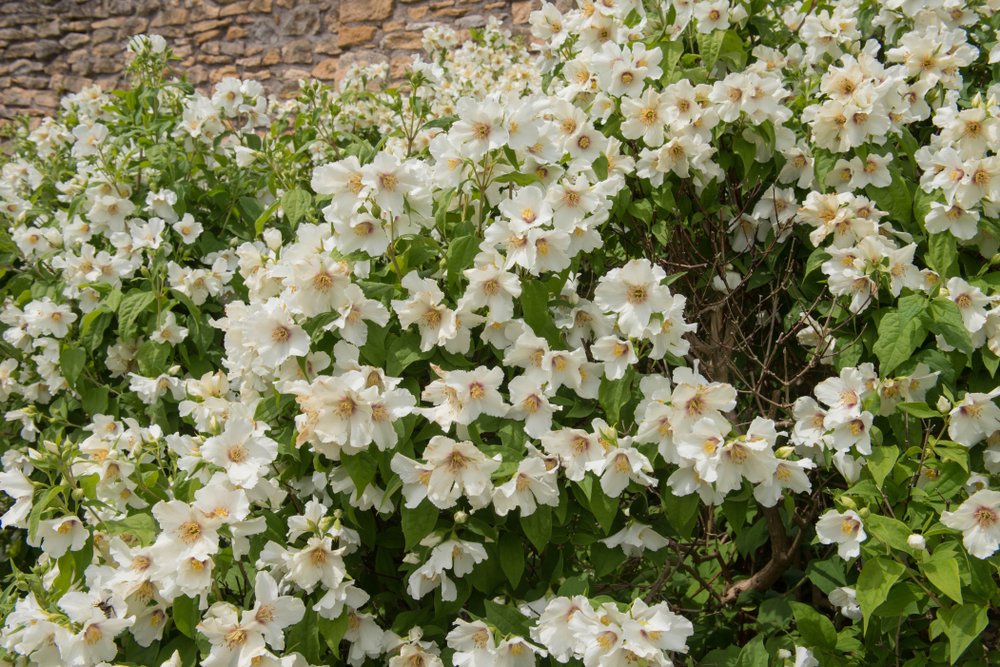
How many flowers can a single plant have? This Osti’s peony is in super bloom!
Osti’s Peony – Paeonia ostii
This peony is a woody tree peony that can grow up to nine feet tall. It is best grown as a hedge. Osti’s peony performs best outside of mild climates. It prefers to have a prolonged colder winter. Being a long-lived plant, these peonies typically take years to establish.
Osti’s Peony Bloom Type
Usually single blooms. Some cultivars have chrysanthemum blooms.
Osti’s Peony Flower Color
White petals with a yellow and red center.
Osti’s Peony Sun Requirements
Full sun to part shade.
Osti’s Peony Water Requirements
Moist soils, but not water-logged.
Osti’s Peony Growing Zones
Hardy to USDA growing zone 6.
Rock’s Peony – Paeonia rockii
This tree peony likes colder climates and is a true beauty! When crossed with Paeonia suffruticosa, hybrids make for spectacular garden additions. These peonies can reportedly handle -35F temperatures. Sometimes, their flower patterns almost resemble the tropical hibiscus!
Rock’s Peony Bloom Type
Lotus bloom.
Rock’s Peony Flower Color
Petals are white with purple dots near the center. Some hybrid varieties have pink petals.
Rock’s Peony Sun Requirements
Full sun to part shade.
Rock’s Peony Water Requirements
Prefers moist soil. Doesn’t tolerate drought very well.
Rock’s Peony Growing Zones
Hardy to USDA growing zone 3.
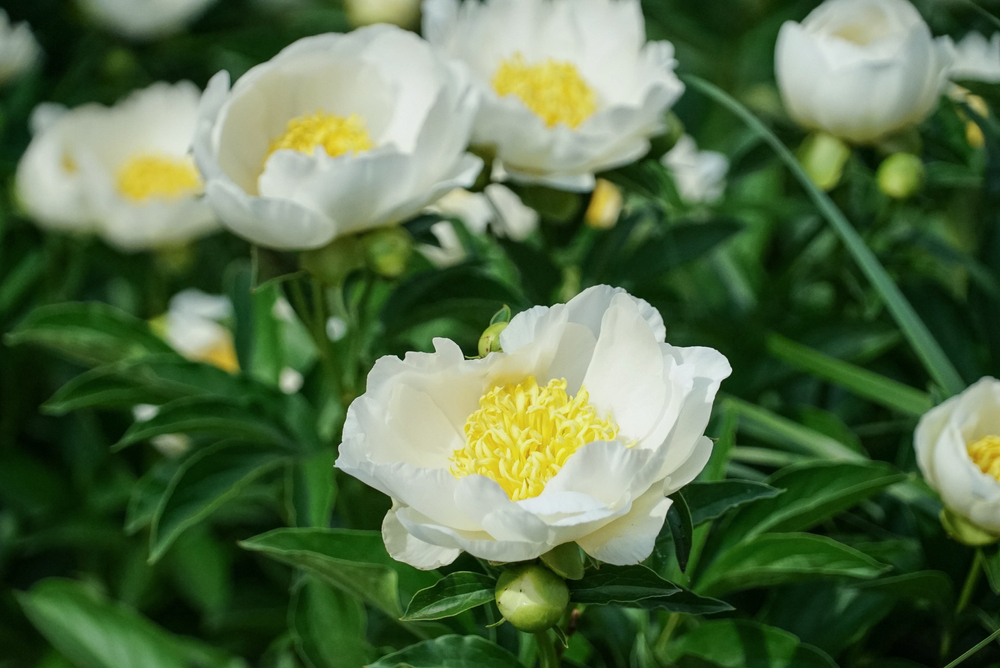
Krinkled White Peony – Paeonia lactiflora
This favorite peony provides vigorous flowers that stay fresh up to a week after being cut. The foliage of krinkled white peony provides some nice fall colors, too. These plants work great for borders.
Krinkled White Peony Bloom Type
Lotus bloom.
Krinkled White Flower Color
White flowers with a yellow center.
Krinkled White Sun Requirements
Full sun to partial shade.
Krinkled White Water Requirements
Needs consistently moist soil.
Krinkled White Growing Zones
Hardy to USDA growing zone 3
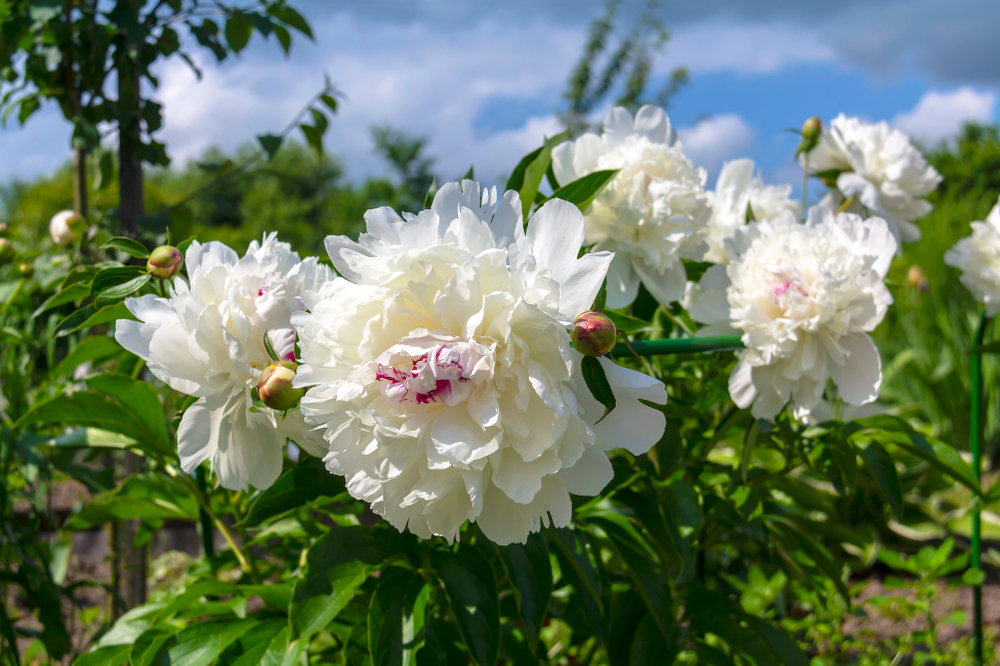
The large, double blooms of the ‘Festiva Maxima’ peony.
Festiva Maxima Peony – Paeonia lactiflora
A favorite for over 150 years, the Festiva Maxima peony has stood the test of time. This is one of the best double peonies for gardeners looking for big blooms. The flowers can reach seven inches wide and smell delightful.
Festiva Maxima Peony Bloom Type
Double flowers, anemone bloom.
Festiva Maxima Flower Color
White petals with some red in the middle.
Festiva Maxima Sun Requirements
Full sun to part shade.
Festiva Maxima Water Requirements
Prefers regular watering in well-drained, rich soils.
Festiva Maxima Growing Zones
Hardy to USDA growing zone 3a
.
Red Peonies
Red peonies are one of the more rare peony colors in the wild, even if they are common horticulturally. Some of the double-bloom and semi-double flowers of red peonies are occasionally mistaken for roses!
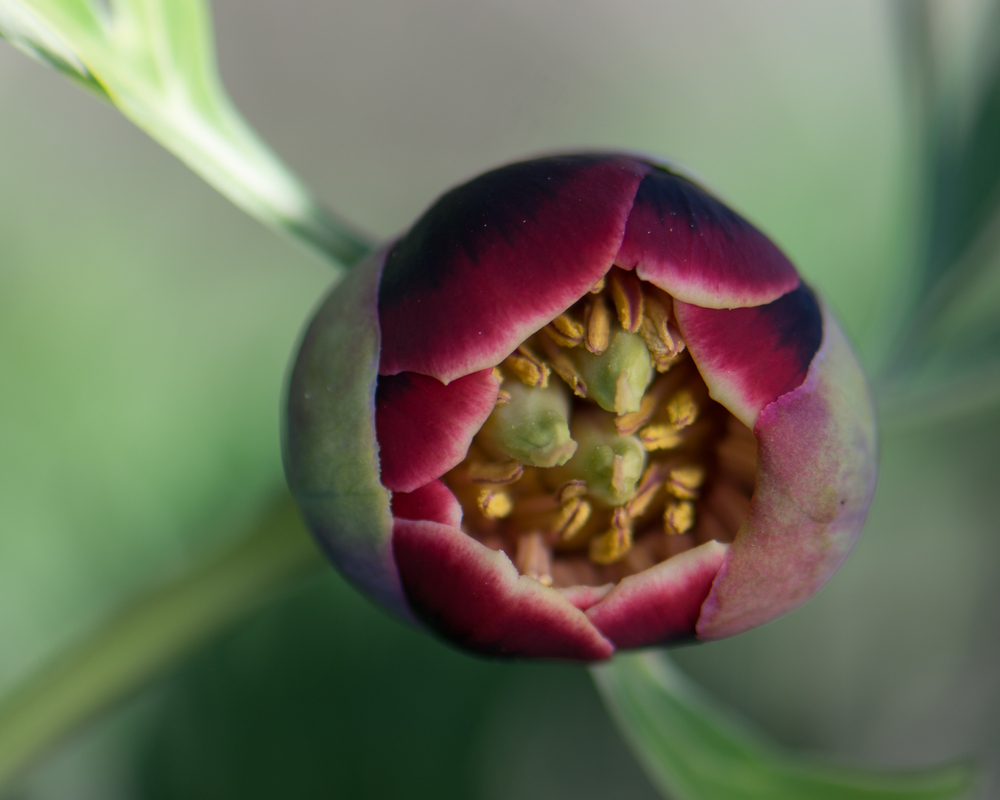
A close-up of a California peony bloom.
California Peony – Paeonia californica
This peony is one of two species native to North America. It only grows near the ocean in the chaparral habitats of southern California. It is relatively common in its habitat, yet gardeners have trouble getting the plant to establish outside of wild settings.
California Peony Bloom Type
Compact single bloom.
California Peony Flower Color
Dark, scarlet red. Nearly brown.
California Peony Sun Requirements
Full sun.
California Peony Water Requirements
Winter water and summer drought. Regular water during the summer will kill this peony.
California Peony Growing Zones
Hardy to USDA growing zone 9.
Balkan Peony – Paeonia peregrina
This is one of the only bright red peonies available for gardeners. It is native to the Balkan countries and Turkey.
Balkan Peony Bloom Type
Single bloom.
Balkan Peony Flower Color
Fire engine red.
Balkan Peony Sun Requirements
Full sun to part shade.
Balkan Peony Water Requirements
Regular water.
Balkan Peony Growing Zones
Hardy to USDA growing zone 4b.
Fernleaf Peony – Paeonia tenuifolia
The feathery texture of the fernleaf peony makes it unique among peony species. When looking to diversify your peony garden, consider leaf texture as well as bloom color and shade. Different shaped leaves can add structure and form to your garden.
Fernleaf Peony Bloom Type
Single bloom.
Fernleaf Peony Flower Color
Usually red, sometimes deep pink.
Fernleaf Peony Sun Requirements
Full sun to part shade.
Fernleaf Peony Water Requirements
Prefers regular watering.
Fernleaf Peony Growing Zones
Hardy to USDA growing zone 4b.
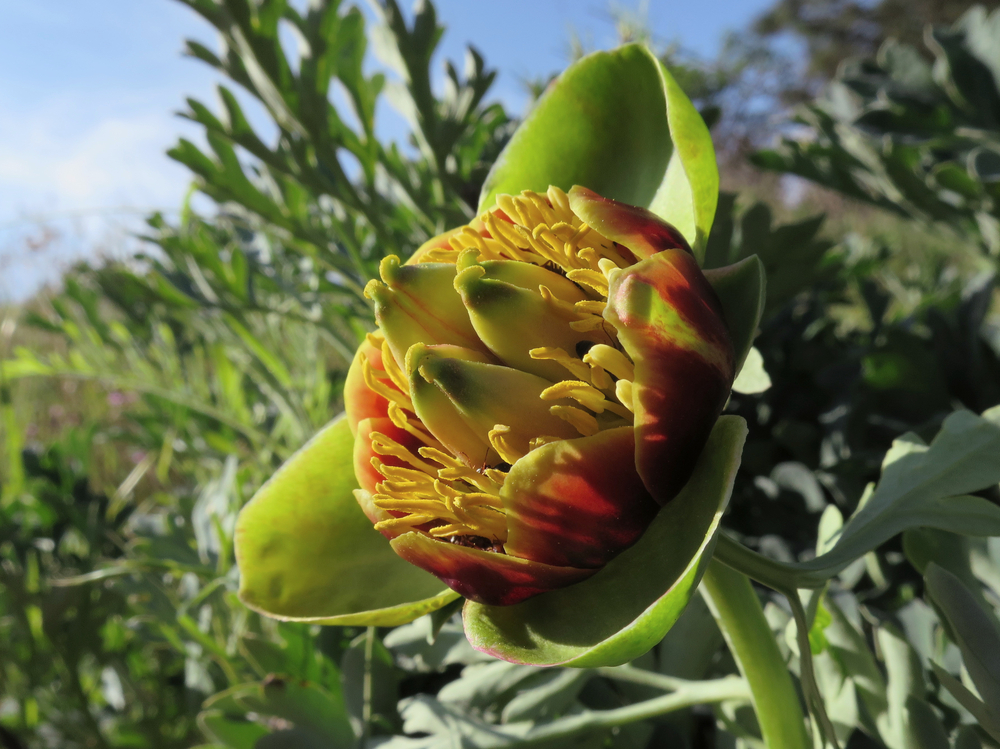
A Paeonia brownii flower in the early stages of blooming.
Brown Peonies
Only the western peony (creatively named Paeonia brownii) and the Greek peony are naturally brown. Unsurprisingly, this color isn’t too popular among home gardeners and horticultural peony varieties.
Western Peony – Paeonia brownii
With the exception of the California peony, this is the only other peony native to North America. It grows in mountainous regions of the western U.S. Some people consider the California peony a subspecies of Paeonia brownii. However, this species grows in the cold, high sage country whereas the California peony grows in the mild chaparral, maritime habitats. The western peony is difficult for home gardeners to grow.
Western Peony Bloom Type
Compact, single bloom.
Western Peony Flower Color
Chocolate brown.
Western Peony Sun Requirements
Full sun to part shade.
Western Peony Water Requirements
Grows in open, dry areas with little summer precipitation.
Western Peony Growing Zones
Hardy to USDA growing zone 6.
Greek Peony – Paeonia parnassica
In addition to dark purple or brown petals, this plant has purple anthers. This peony is native to a few mountain ranges in Greece and is a tough plant to use in gardens. It can take many years for it to flower in home gardens.
Greek Peony Bloom Type
Single bloom.
Greek Peony Flower Color
Dark purple to chocolate brown.
Greek Peony Sun Requirements
Full sun to part shade.
Greek Peony Water Requirements
Prefers regular water.
Greek Peony Growing Zones
Unknown.
Peonies in Multiple Colors
While uncommon in the wild, multi-colored peonies are a favorite in gardens. Breeders have created scrumptious blooms that combine yellow and pink or white and red. Some wild species of peonies have two-colored petals, while a handful has two different colored, natural varieties.
Molly the Witch – Paeonia daurica
This peony is native to the Caucasus mountains of central Asia. Having many subspecies in a variety of habitats throughout its range, this diverse peony comes in a wide array of colors. Some cultivars do well in home gardens.
Molly the Witch Bloom Type
Single bloom.
Molly the Witch Flower Color
This peony can be either white, pink, or a striped mixture of the two colors. Some cultivars even have yellow flowers.
Molly the Witch Sun Requirements
Sun to part shade.
Molly the Witch Water Requirements
Needs regular water.
Molly the Witch Growing Zones
Hardy to USDA growing zone 4.
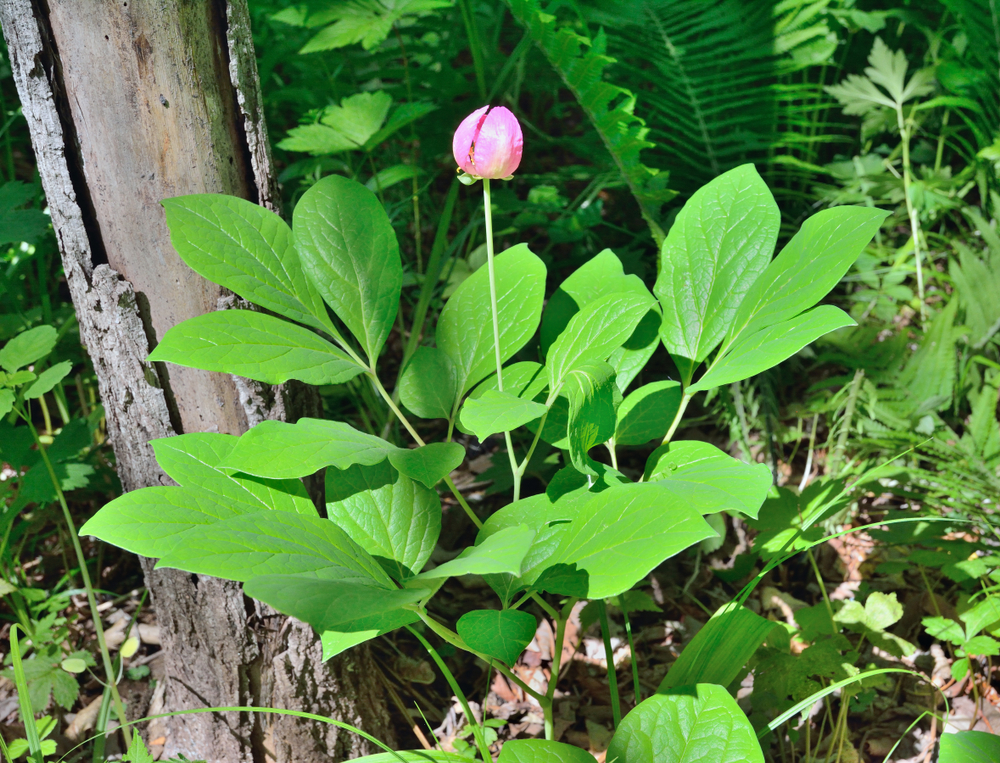
Japanese Forest Peony – Paeonia obovata
This peony has one of the more widespread native habitats of all peony species. Unlike its name implies, it grows in Korea, Russia, and China as well as Japan.
Japanese Forest Peony Bloom Type
Single bloom.
Japanese Forest Peony Flower Color
Petals can be white, red, or even purple.
Japanese Forest Peony Sun Requirements
Part shade.
Japanese Forest Peony Water Requirements
Prefers regular water.
Japanese Forest Peony Growing Zones
Hardy to USDA growing zone 5.
Common Peony – Paeonia officinalis
This small peony native to southeastern Europe has attractive foliage that dies back to the ground after the first frost. This peony is a beloved garden plant all over the northern hemisphere.
Common Peony Bloom Type
Single bloom.
Common Peony Flower Color
Pink to white.
Common Peony Sun Requirements
Full sun to part shade.
Common Peony Water Requirements
Requires regular water.
Common Peony Growing Zones
Hardy to USDA growing zone 8.
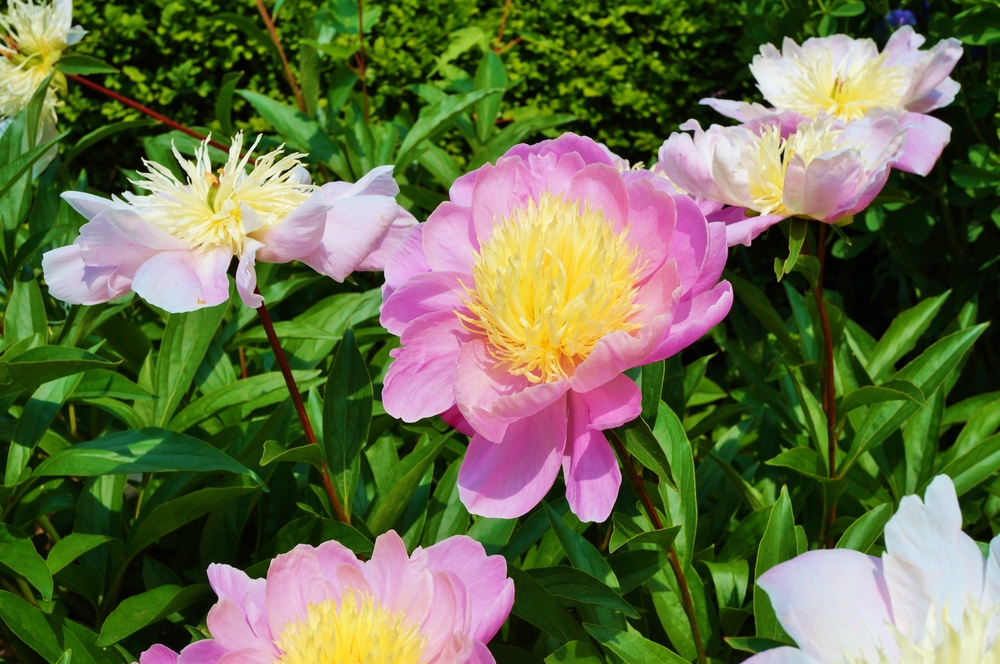
Raspberry Sundae Peony – Paeonia lactiflora
The flowers on this peony are so large and heavy that they can break the strong stems that support them!
Raspberry Sundae Bloom Type
Double-bloom, Golden circle
Raspberry Sundae Flower Color
A lovely mix of pink, white, and light yellow petals.
Raspberry Sundae Sun Requirements
Grows best in full sun.
Raspberry Sundae Water Requirements
Prefers regular watering.
Raspberry Sundae Growing Zones
Hardy to USDA growing zone 4
Moutan Peony – Paeonia delavayi (Paeonia suffruticosa)
This peony, sometimes called the maroon tree peony, is one of the best species of tree peony for the home garden. It isn’t too fussy, except that it doesn’t do well in cold areas.
Moutan Peony Bloom Type
Single bloom.
Moutan Peony Flower Color
The two main kinds of Paeonia delavayi have either deep scarlet red or pale yellow flowers.
Moutan Peony Sun Requirements
This peony prefers some shade but can grow in full sun in some places.
Moutan Peony Water Requirements
Moutan peony requires consistently moist, but never waterlogged, soil.
Moutan Peony Growing Zones
Hardy to USDA growing zone 6.
Yellow Peonies
Both naturally yellow species of peonies have woody, strong stems and live in southern China and Tibet.
Tree Peony – Paeonia delavayi
This tree peony isn’t much of a tree, growing to five feet tall. However, it is one of the few woody species of peonies. The tree peony is native to grasslands in southern China and Tibet from 9,000 to 11,000 feet. This peony creates a nice hedge.
Tree Peony Bloom Type
Single bloom.
Tree Peony Flower Color
Usually butter yellow, but sometimes scarlet red.
Tree Peony Sun Requirements
Full sun to part shade.
Tree Peony Water Requirements
Requires a moderate amount of water.
Tree Peony Growing Zones
Hardy to USDA growing zone 4.
Ludlow’s Tree Peony – Paeonia ludlowii
Like its cousin Paeonia delavayi above, Ludlow’s tree peony is native to southern China and Tibet, where it is called ‘God’s flower’ in Tibetan. Rats might be this peony’s best method of dispersal in its native habitat!
Ludlow’s Tree Peony Bloom Type
Single bloom.
Ludlow’s Tree Peony Flower Color
Yellow petals.
Ludlow’s Tree Peony Sun Requirements
Full sun to full shade.
Ludlow’s Tree Peony Water Requirements
Thrives in rich soils with moderate watering. Doesn’t tolerate too much water.
Ludlow’s Tree Peony Growing Zones
Hardiness to USDA growing zone 5.
Types of Intersectional Peonies (Hybrid Peonies)
Most kinds of peonies available in nurseries are hybrid varieties of peonies. Hybridization causes a much wider array of shapes, colors, and flowers than the 33 wild species of peonies offer. One kind of hybrid peony is the Itoh peonies. These special kinds of hybrids are a cross between a species of woody, tree peonies with herbaceous, perennial peonies. Sometimes these Itoh hybrids are called intersectional peonies.
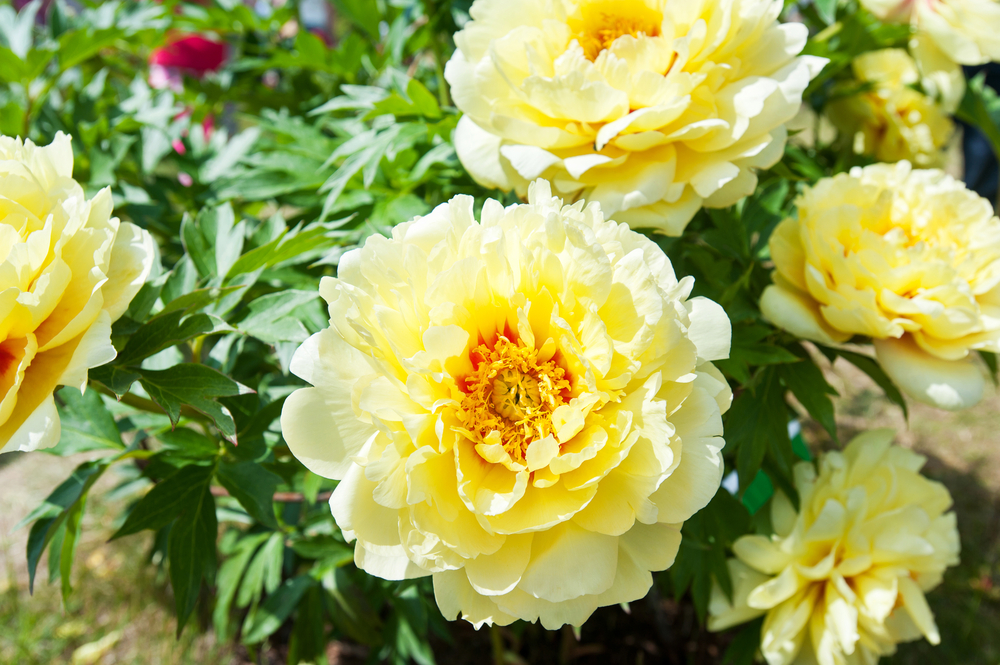
Bartzella Peony
This cross between a tree peony and a garden peony has huge, yellow blooms.
Bartzella Peony Bloom Type
Single bloom.
Bartzella Peony Flower Color
Yellow.
Bartzella Peony Sun Requirements
Full sun to part shade.
Bartzella Peony Water Requirements
Likes moisture, but doesn’t tolerate soggy feet.
Bartzella Peony Growing Zones
Hardy to USDA growing zone 4.
Conclusion
If you want to learn more about peonies, consider planting a peony garden and joining your local peony society. There is always more to learn about popular plants, such as peonies, and there are lots of people eager to share their knowledge. Have fun and be sure to experiment with peonies yourself!
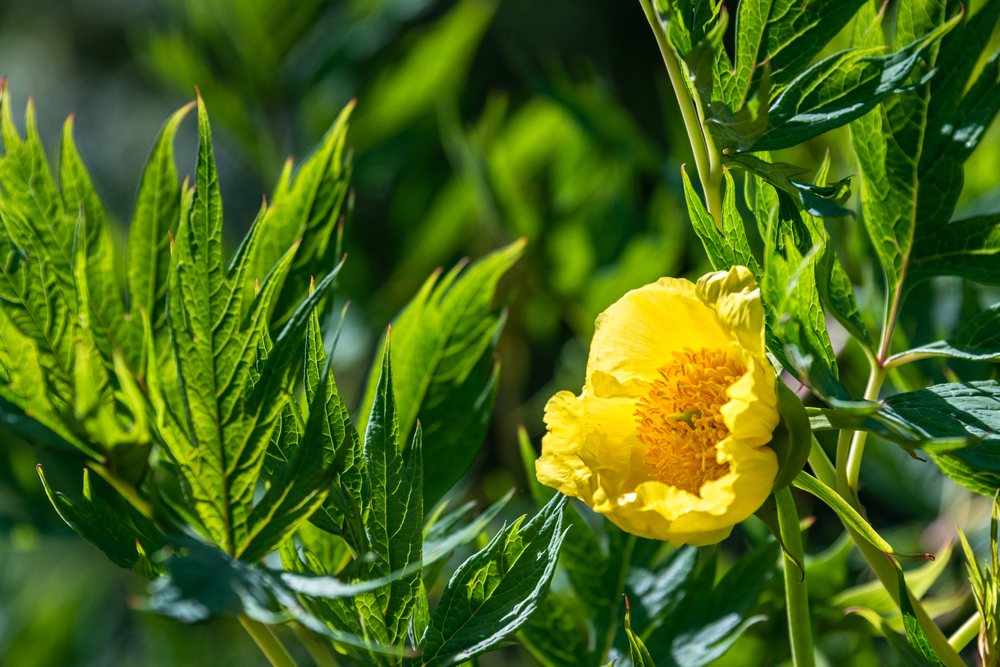
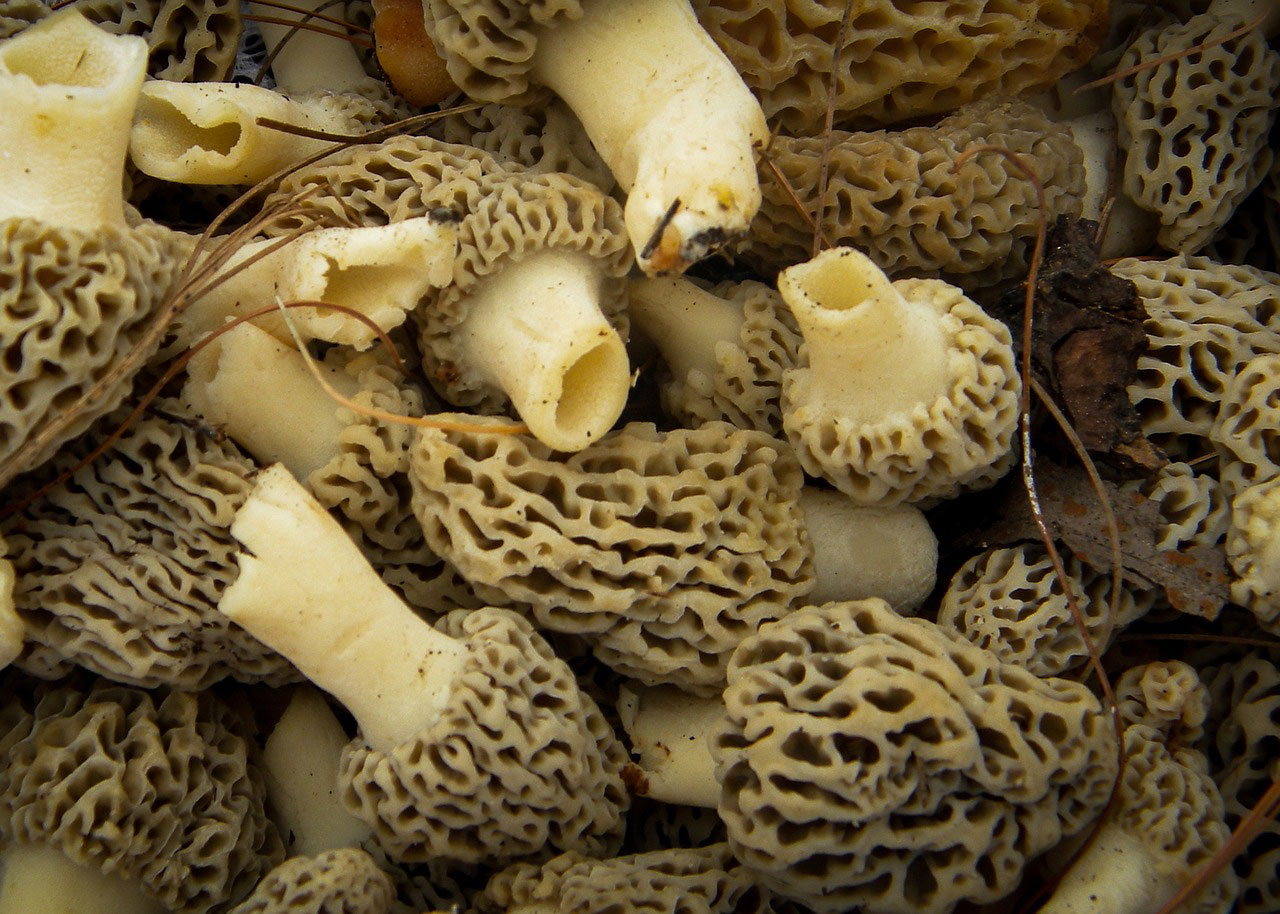
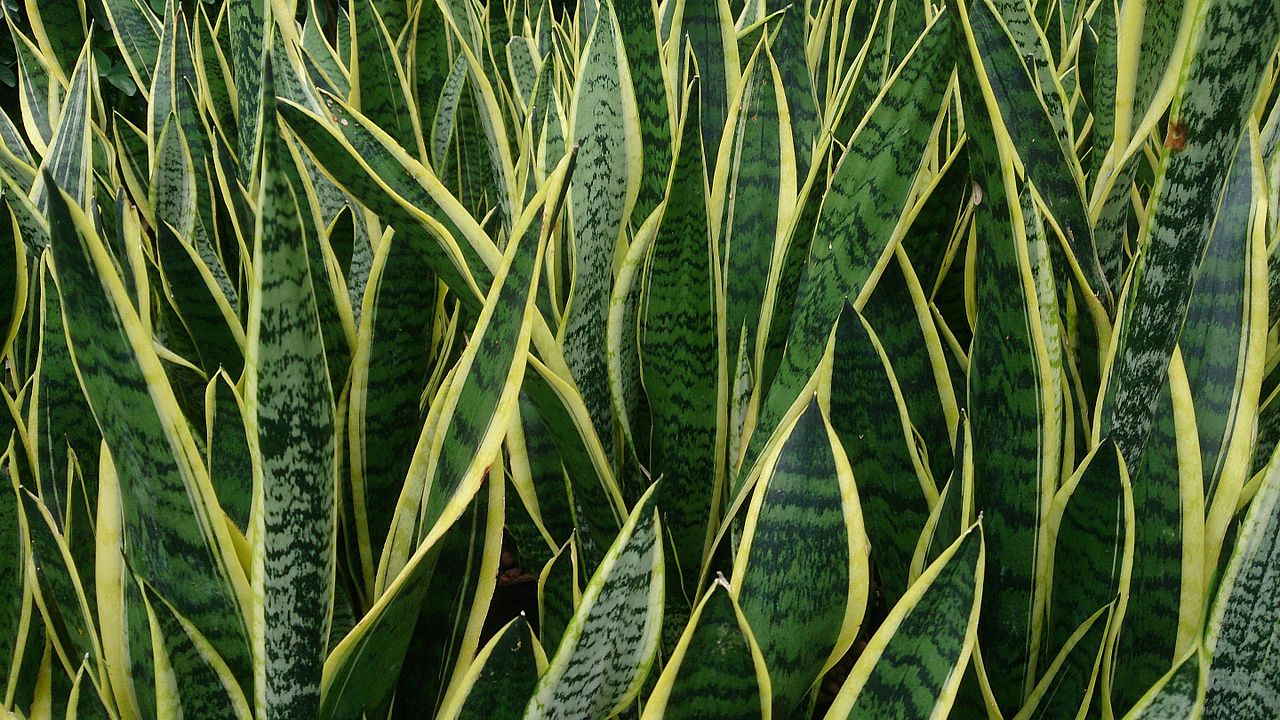
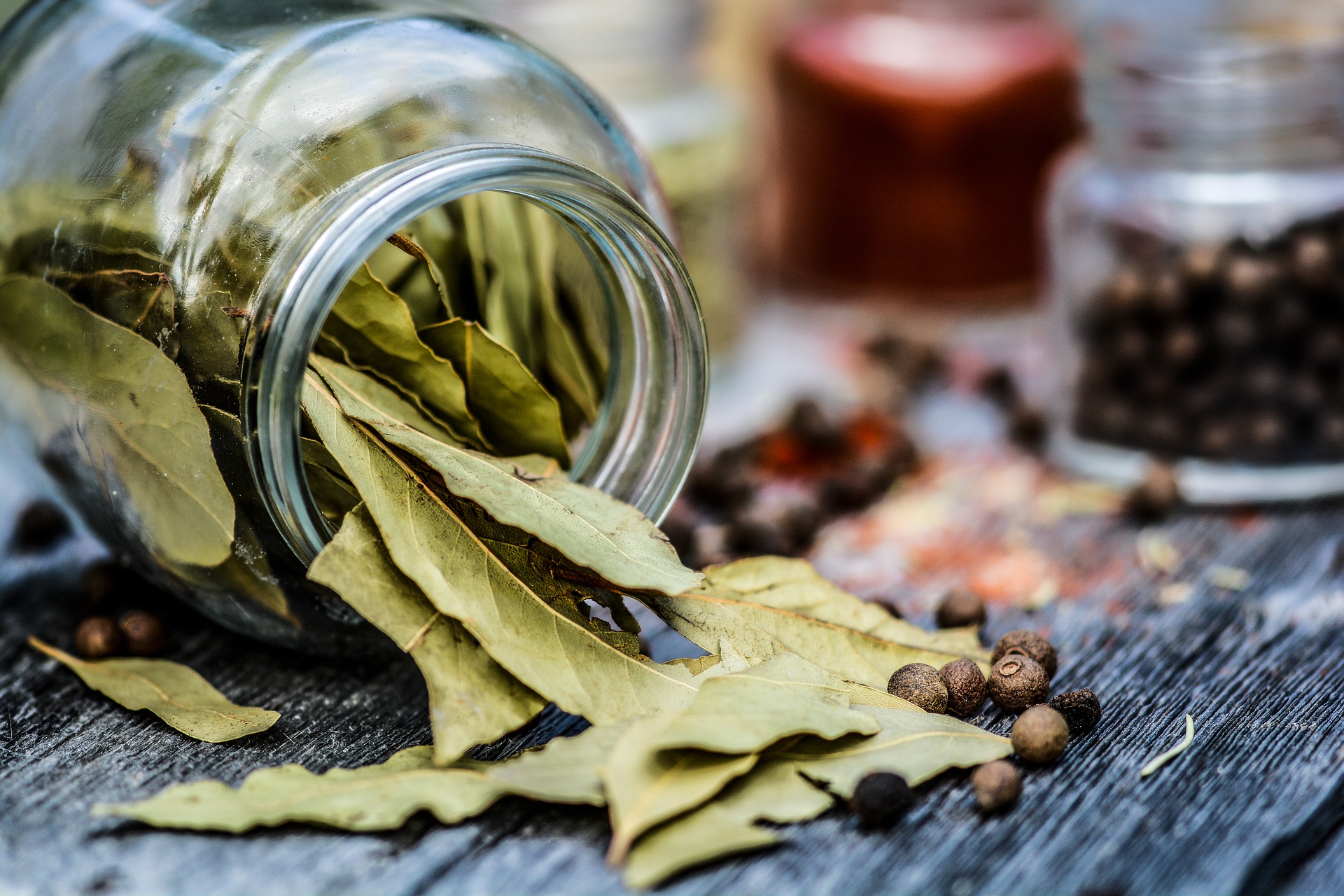
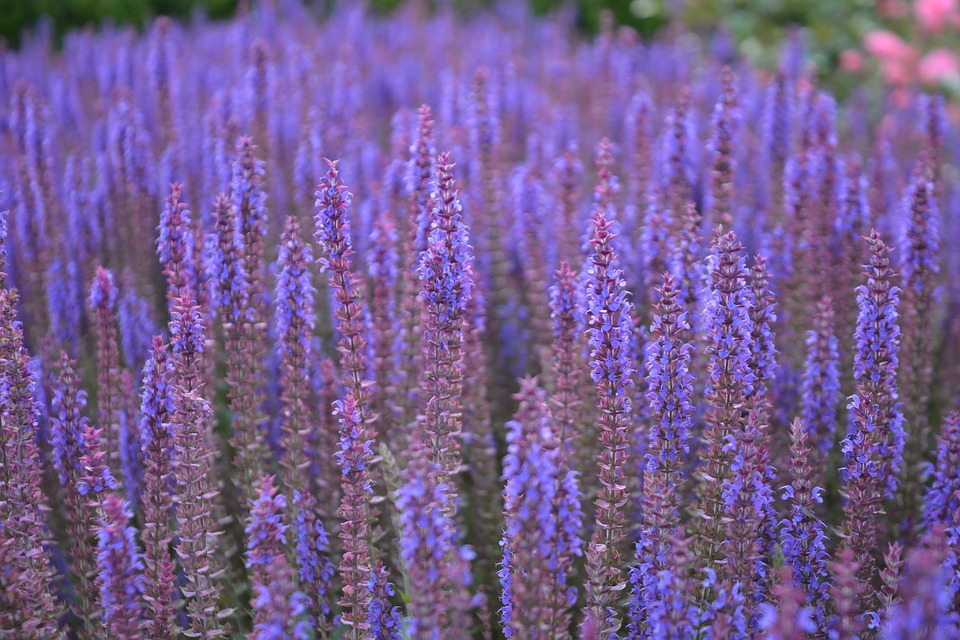
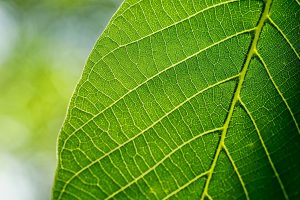

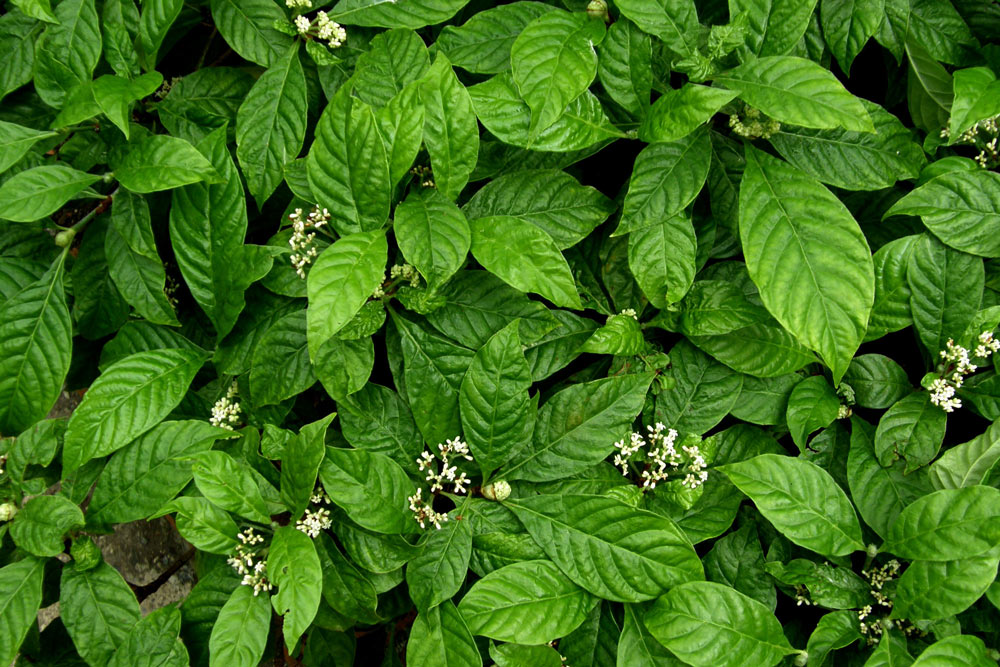
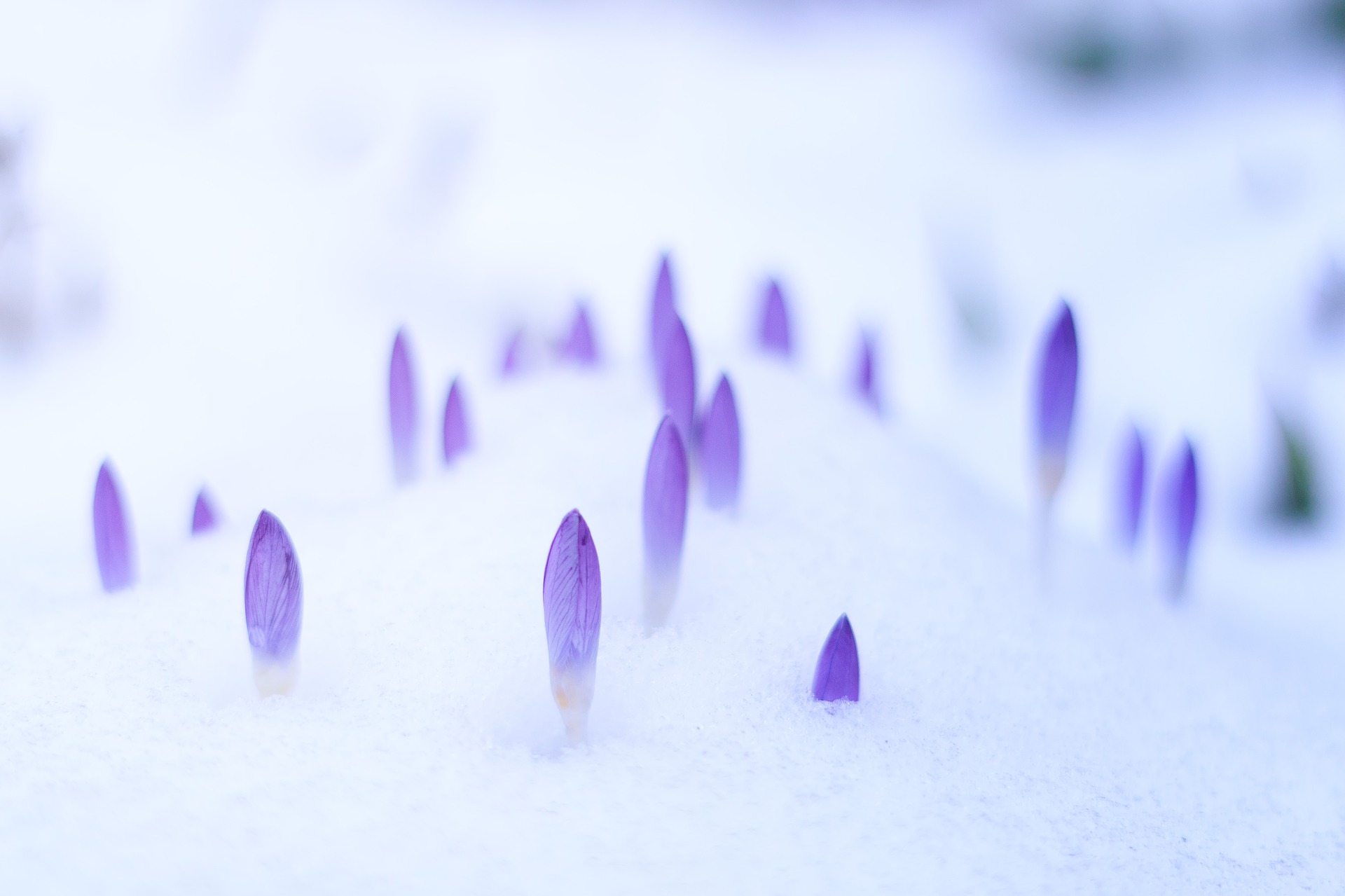
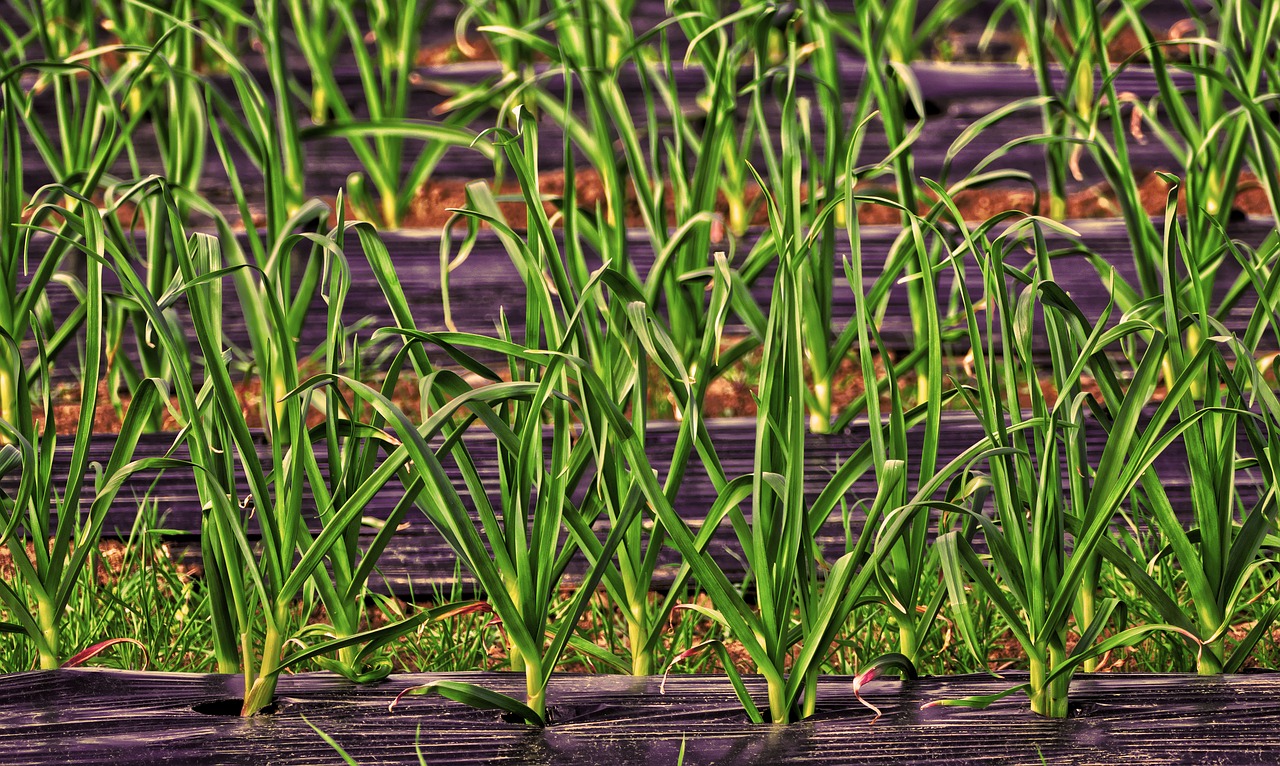
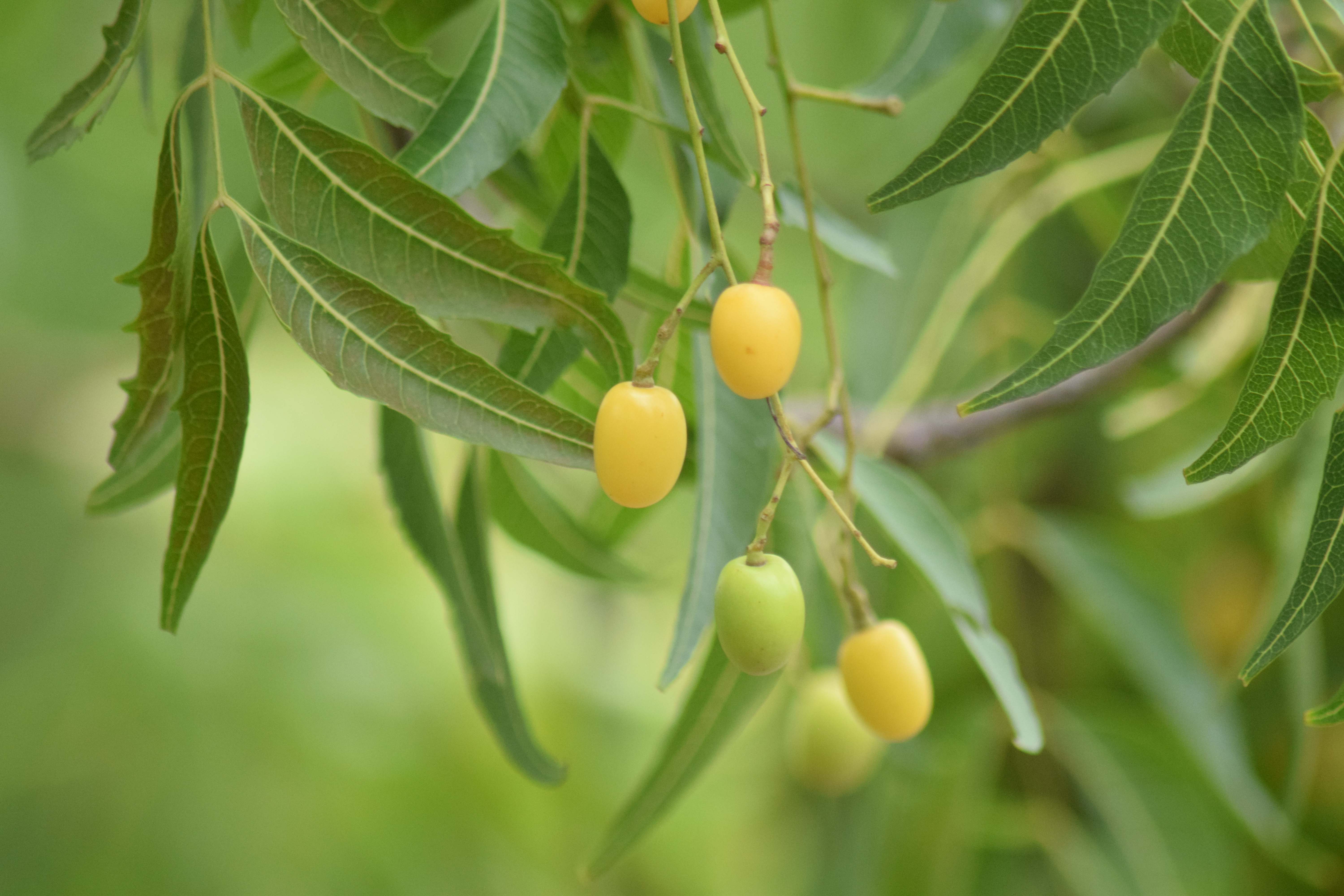
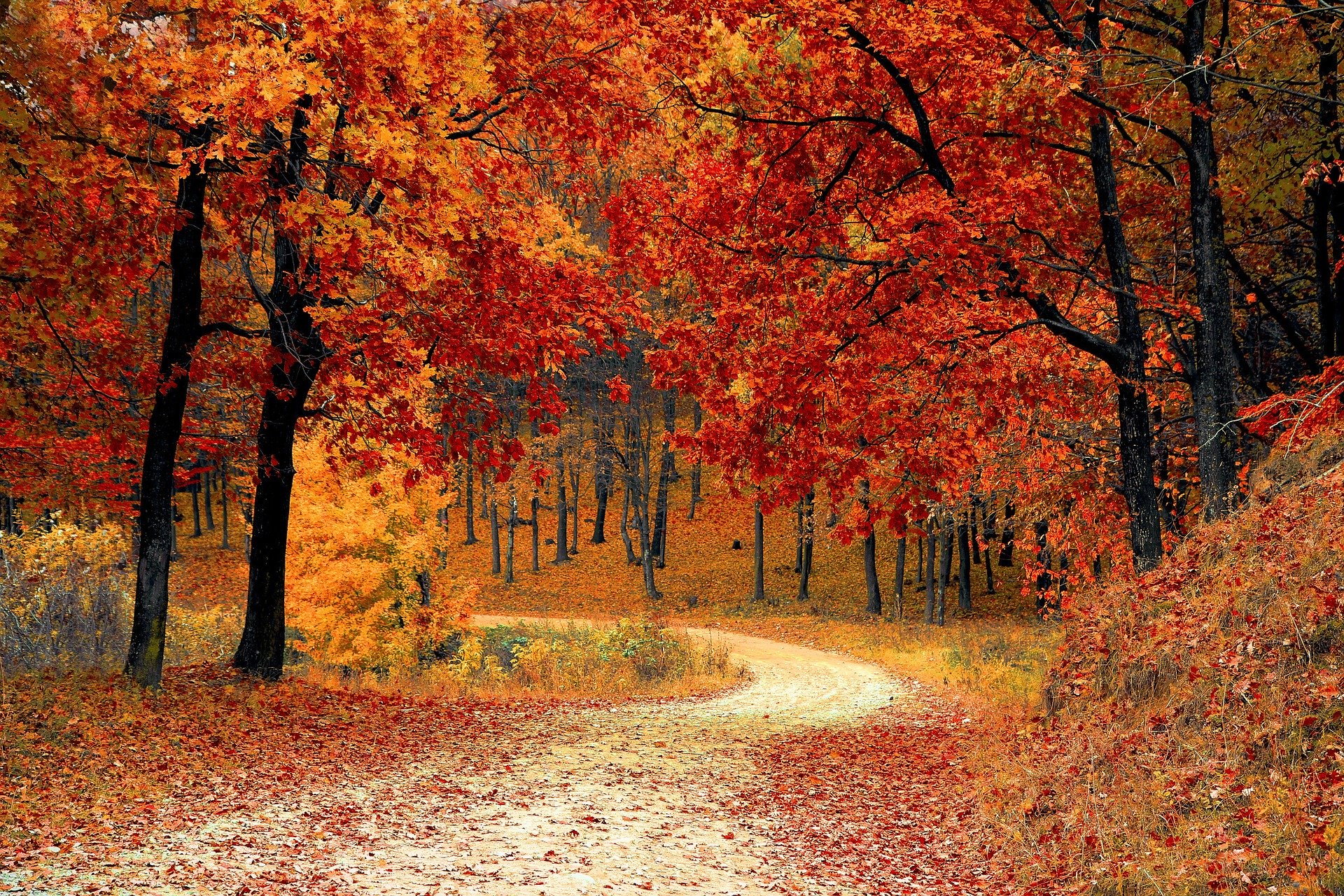
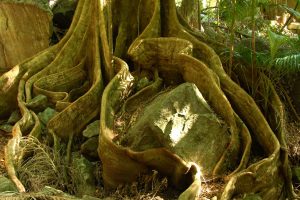

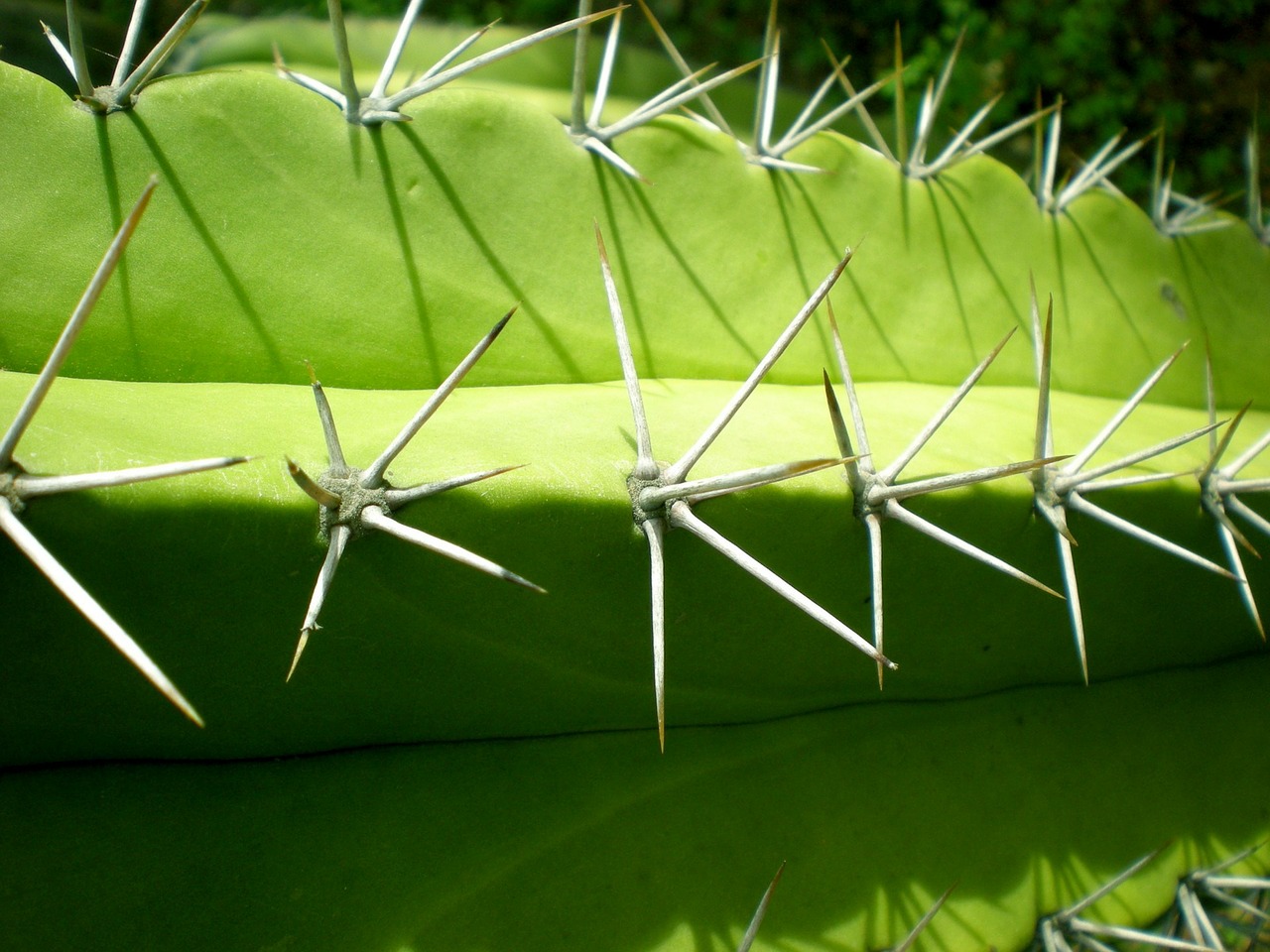
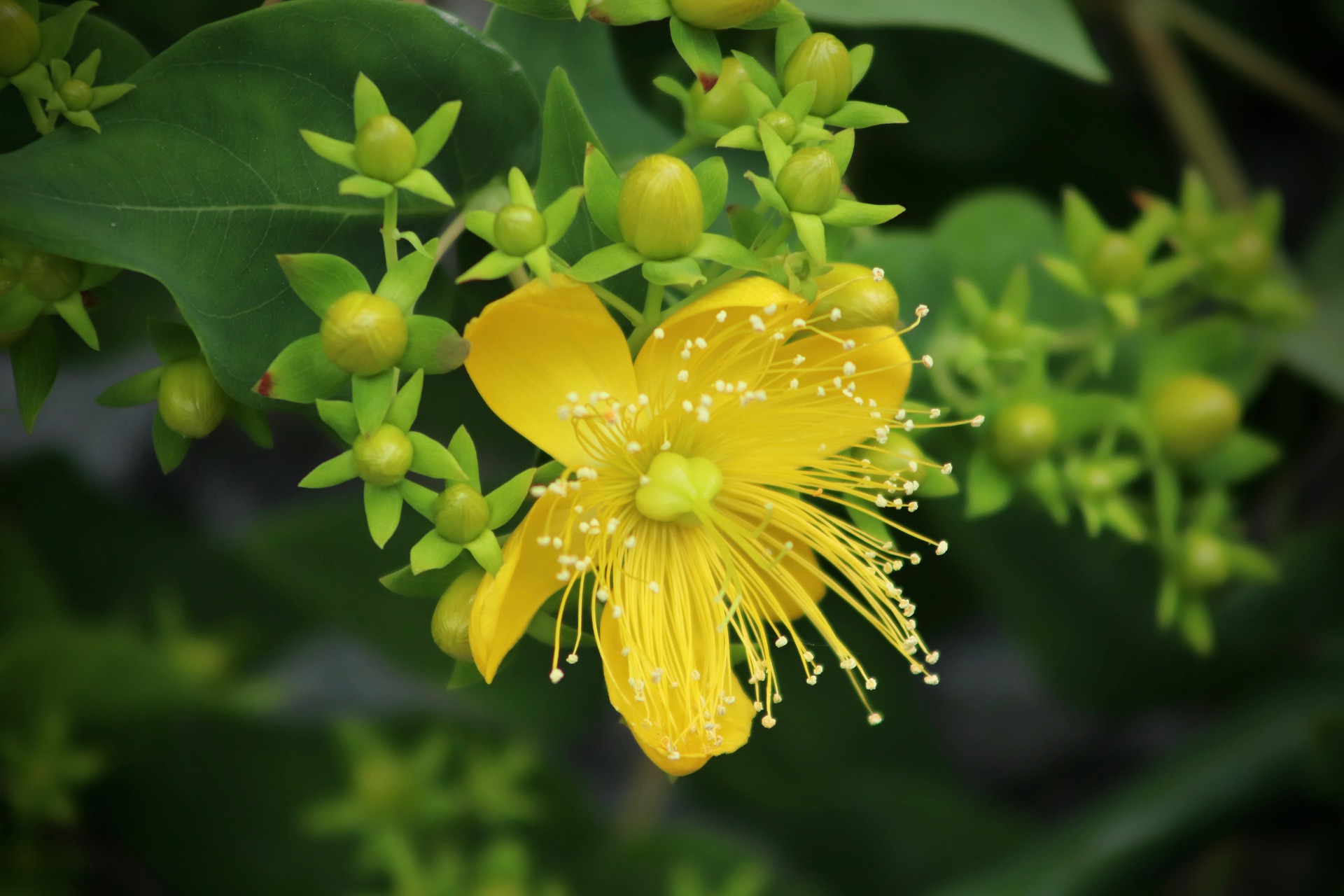
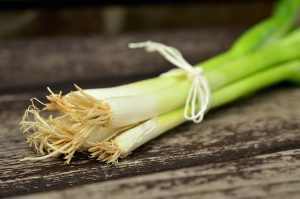
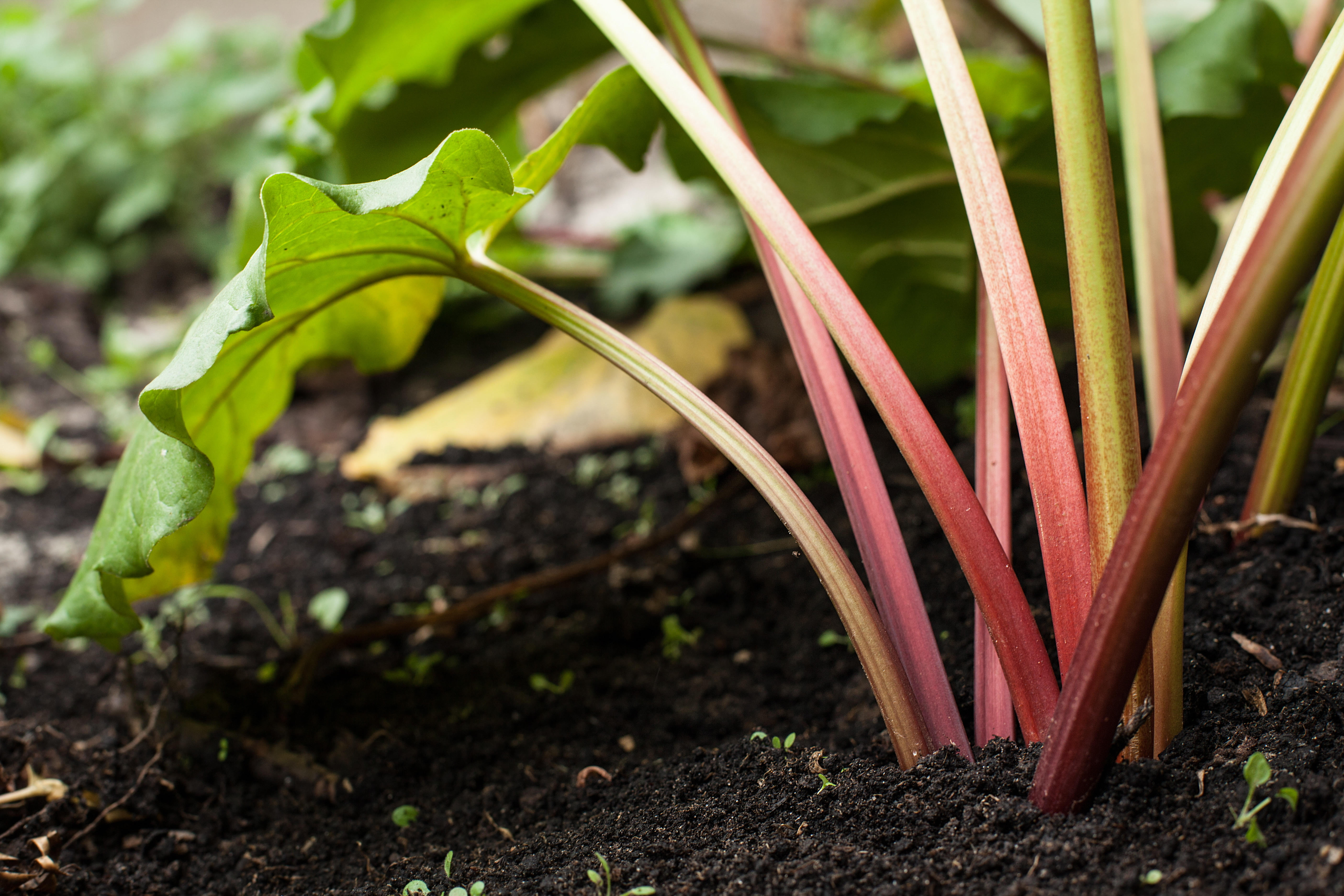

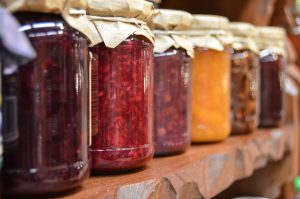
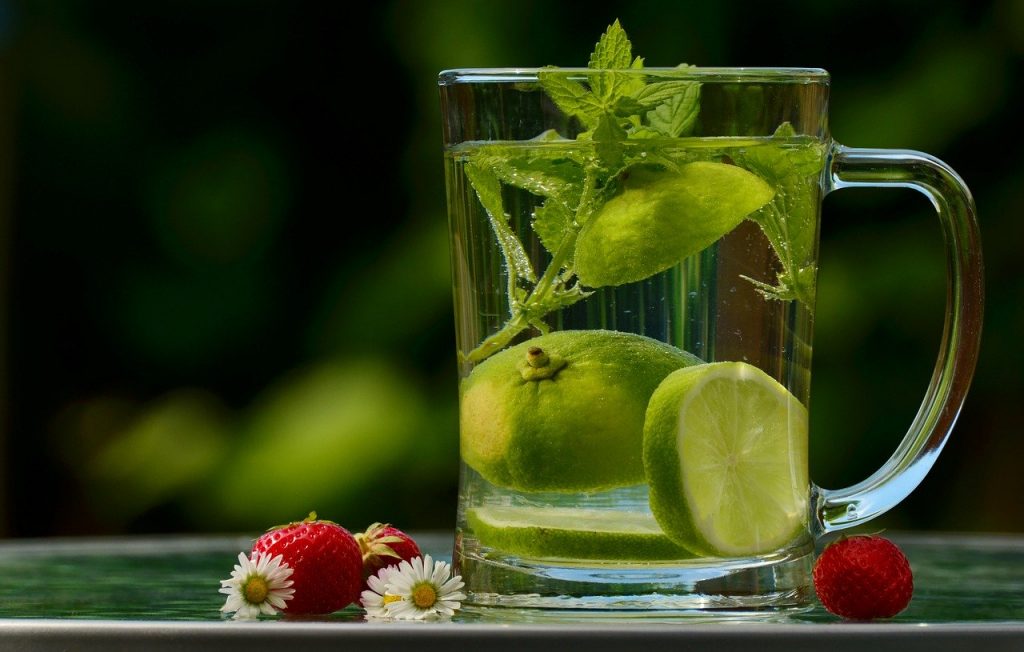
0 Comments